

African Safari Tree Species: A Deep Dive
Disclosure: Some links may be affiliate links. If you buy an item via links on our site, we may earn a commission. Learn more .
The African Savanna covers a whopping 5 million square miles (12.95 million square kilometers) and here, you’ll find an abundance of animals. But often the plant life of the savanna is overlooked, yet there are some incredible species to be observed. In this guide, I’ll introduce you to some of the most wondrous tree species that you may encounter on your African safari.
Trees to Spot On Your African Safari
From towering trees to swaying palms and those with beautiful flowers, the African savanna is home to an array of interesting species.
1. Acacia Tree ( Acacia spp.)

The word acacia actually comes from the Greek language and the word akis which roughly translates to mean sharp point. It was given this name because these trees are often covered in sharp thorns, which serve as a method of self-defense. Many herbivores, like giraffes, are keen to feed on these trees, but the thorns stop them. Still, they’re white in color so they’re not hard to miss, and most animals will give them a wide berth.
There are actually more than 900 species of acacia tree, and they’re native largely to Australia and the South Pacific. However, one species, Sensu stricto , is native to the African island of Madagascar. There are a further 132 species found across Africa, with around 62 of these found in East Africa, including the whistling thorn acacia ( Vachellia drepanolobium ) and the wait-a-bit acacia ( Vachellia brevispica ). These trees can be characterized by their feathery leaves and canopies that form an umbrella shape.
Acacia trees look amazing, but this isn’t their only advantage. Certain species of acacia are used in the pharmaceutical industry, such as the Acacia Senegal, whose gum arabic is used as a stabilizing agent.
What’s more, since the acacia is such an adaptable tree, it can thrive in a multitude of conditions. This means that it serves as a resource for many animals, including elephants, antelopes, and giraffes; if they can get past those spikes first! On top of this, acacia trees bloom highly fragrant flowers that are essential for pollinators. But despite the tree’s adaptability, it is sensitive to environmental changes, which makes it a great indicator species .
But what I find most interesting is the mutualistic relationship that these trees have with ants . The ants take refuge in the trees, finding shelter and food while at the same time adding another layer of protection from herbivores. Both parties benefit from this.
If that wasn’t enough, consider that there are many species of acacia, like the Acacia karroo , that are nitrogen-fixing plants. This essentially means that there are special bacteria within the roots that convert energy to nitrogen, aiding the tree’s growth. But this nitrogen also ends up in the surrounding soil, improving its health. What’s more, this free nitrogen source could be of great benefit to farmers , who would then need to use fewer chemical fertilizers; that’s great news for the environment.
2. African Baobab Tree ( Adansonia digitata )

You may not be familiar with the name baobab tree because oftentimes, this species is called the upside down tree or the tree of life. It’s not hard to see where the term upside down tree comes from since, when the tree is bare, the branches look like upturned roots.
But it’s not only the magical appearance that makes these trees so special; some individuals can live for thousands of years, so they’re among the oldest trees on the planet. In fact, the Sunland baobab in South Africa has been estimated to be around 1060 years old and is something of a global icon. Like other baobabs, this tree has a huge trunk, so it’s able to store thousands of gallons of water. In the African heat and often arid conditions, this is an important survival tactic.
However, once the trunks become hollow, humans have found many uses for them including for grain storage. But perhaps more interesting is the story of the Prison Baobab , which is thought to be 1500 years old and was used to house prisoners in Australia. Humans have also realized the nutritional value of the tree’s fruit, which is high in vitamins and antioxidants. The fruits can grow up to 9.8 inches (25 cm) and are covered in a thick, woody shell; they’re sometimes called monkey bread and are enjoyed by many species, including baboons.
Another reason that humans love the baobab tree is a more mythical one; African folklore tells us that spirits reside in the hollow trunks, so locals will go to any means necessary to protect these sacred trees. The tree is also highly symbolic and represents unity, wisdom, and life itself.
These trees also produce flowers that bloom at night. This makes them an important resource for nocturnal pollinators like moths and bats, which also help to spread the pollen and keep the species going.
3. Sausage Tree ( Kigelia africana )

While the name may suggest otherwise, I can assure you that there are no meaty appendages on this tree. However, the sausage tree does take its name from the large, sausage-like fruits that can grow up to 23.6 inches (60 cm) and weigh as much as 10 lbs (4.5 kg)!
Although, it’s worth mentioning that the scientific name of the tree was given after a Scottish man named Dr Kigelia, who was the first to describe the tree in the 1700s.
The fruits are a popular food source for African wildlife, including hippos, elephants, and bush pigs, among others. However, the fruits are known to contain poison and should never be eaten raw. Cooking the fruit gets rid of the poison, and there are various health benefits known to consuming it, including its anti-inflammatory properties.
The sausage tree also bears beautifully fragrant flowers that burst open at night, creating a food source for nighttime pollinators who also help to spread pollen and aid in the tree’s reproductive cycle. These bell-shaped flowers grow on stems that can get as long as 25 feet (7.6 meters)!
The sausage tree is the only member of its genus, and the species is found in all tropical regions of Africa. Typically, these trees grow to around 66 feet (20 meters) in height and have a very wide spreading canopy.
4. Whistling Thorn ( Vachellia drepanolobium )

The whistling thorn is a species of acacia tree that is covered in pairs of hooked thorns. Just like other acacias, these thorns are there to protect the tree against herbivorous grazers. But they also provide the perfect environment for ants; another example of that mutualistic relationship I discussed earlier.
But what is truly fascinating about this species is where it gets its name; it really does whistle. As the wind passes through the thorns, it makes a very distinct whistling sound. But this wouldn’t be possible without the aforementioned ants who burrow into the thorns creating a natural musical instrument!
Living in the extreme African conditions, it’s important that trees have ways of surviving, and the whistling thorn does this with its finely divided leaves. This allows the tree to retain water so it can survive hot and dry periods. This leaf structure also gives the whistling thorn its characteristic feathery look.
Whistling thorns are native to East Africa and can grow up to 18 feet (5.5 meters) in height. Each of the thorns can be as long as 3 inches (7.6 cm), but that doesn’t stop animals like elephants and giraffes from feeding on the leaves.
5. Fever Tree ( Vachellia xanthophloea )

Another species of acacia, the fever tree, is found in countries like Tanzania, Zambia, Kenya, South Africa, and other Sub-Saharan regions. The tree was dubbed the fever tree because European settlers had the idea that standing too close could make you ill, but this was nothing more than a misconception.
The fever tree has smooth greenish-yellow bark and can grow up to 82 feet (25 meters) in height. What’s interesting is that bark is known for its antimicrobial properties. Moreover, it’s the bark that is responsible for photosynthesis in these short-lived trees, which are typically found in swampy areas. There are often many fever trees growing together, forming a forest, and one of the best examples of this can be seen in the Kruger National Park in South Africa.
While the tree does have thorns that can grow up to 7 inches (17.8 cm), the bark contains tannins which make it taste bitter and this is attractive to many grazing animals. The leaves fall is a sparse canopy that allows sunlight through but still provides enough shade so that the tree can retain water.
6. Jackalberry Tree ( Diospyros mespiliformis )

It’ll probably come as no surprise when I tell you that the jackalberry tree gets its name because the fruits are a firm favorite of jackals (a type of wild African canine related to dogs, foxes, and wolves.) However, some people refer to the tree as African ebony since the wood is often used as an alternative to true ebony.
The Jackalberry tree is a type of evergreen tree that is actually related to ebony. It’s found in many African countries like South Africa, Namibia, and Zimbabwe and has dense, dark green foliage and can grow up to 82 feet (25 meters) in height. More often than not, these trees are found in riparian environments and on termite mounds, but it’s not uncommon for them to grow in the sandier soils of the savanna.
In Africa, the jackalberry tree is thought to have many medicinal properties. For example, many believe that consuming the roots not only gets rid of parasites but can also cure leprosy. The fruit of this tree is often used in beer and wine making, while the bark is often used to stop bleeding because of the high levels of tannins.
7. Marula Tree ( Sclerocarya birrea )

The marula tree is probably most well-known for marula beer which is produced using the fruits. In some African countries, this beer is called maroela mampoer, and the fruit is mashed into water before being left to ferment.
And it’s not just humans that can benefit from the high of this natural beer. When the fruit drops from the tree and ferments, it is said that it can make elephants drunk. However, while this is possible, the animal would have to consume an enormous amount to feel the effects.
Growing all over southern Africa, particularly in the Kruger National Park, the marula tree’s fruit is also a popular snack. In Zimbabwe, it’s reported that more than 24 million of these fruits are eaten annually because people want to make the most of their high levels of vitamin C. Plus, the fruit oil can be used in skincare products and for cooking.
Marula trees are deciduous and grow to a medium height of around 59 feet (18 meters). They’re typically found in mixed woodlands and on rocky hills and can be characterized by their single stem and wide canopy.
8. Quiver Tree ( Aloidendron dichotomum )

The quiver tree, a species of succulent, has one of the most unique appearances of all the plants in Africa. This branching tree has a thick trunk and branches that reach upwards in a Y shape. They often grow on their own, but there are examples of quiver tree forests, such as the one in Keetmanshoop, Namibia.
You may wonder where this tree got its name, and it comes from the San people. They used to take the hollow branches and use them as quivers for carrying their arrows.
However, the quiver tree is found in very arid regions, but it is specially adapted to these conditions. Unlike other trees whose roots are buried deep down in the ground, the quiver tree has much shallower roots that spread widely. This allows it to absorb water on the rare occasion that it rains.
While the quiver tree doesn’t currently have an endangered status, the number of individuals is diminishing. This means that, in the future, it could become an endangered, even protected species.
9. Mopane ( Colophospermum mopane )

The mopane, sometimes called the butterfly tree because of the leaves that form the shape of butterfly wings, is a tree in the legume family. They’re commonly found in the northern parts of Southern Africa and prefer low lying, hot habitats.
This species can grow as either a shrub or a tree, but what’s unique about them is their ability to grow in conditions where little else thrives. Since there isn’t a lot of rain where the mopane grows, it has specially adapted leaves that fold in on themselves during dry spells to prevent water evaporating from them.
Mopane leaves contain as much as 40% protein and in summer, the tree gets covered in mopane worms who feed on this goodness. Humans form the next part of the food chain here and will dry roast the protein-rich worms as an important source of nutrition. The tree also produces flat, kidney shaped fruits that contain a single seed.
10. Candelabra Tree ( Euphorbia candelabrum )

The candelabra tree takes its name from its cylindrical branches which grow from the trunk vertically to form a rounded crown. However, the name is misleading as this isn’t a tree but a type of cactus.
This is a small species that typically only grows to around 39 feet (12 meters). Although there have been much taller specimens recorded at a maximum of 66 feet (20 meters). While juvenile candelabra trees have leaves for photosynthesis, they lose these as they reach maturity.
Candelabra trees are endemic to parts of eastern Africa and the Horn of Africa in arid environments. But while beautiful, these trees harbor a dark secret; they’re extremely toxic.
When they’re damaged, candelabra trees emit a high-rubber content latex, which is known to be very irritating to the skin. What’s more, if the substance gets into the eyes, it can cause blindness. So potent is this sap that hunters have often used it to make poison.
11. Weeping Wattle ( Peltophorum africanum )

The weeping wattle is a deciduous flowering tree that’s found in the southern parts of the African continent, below the equator. This tree grows to around 49 feet (15 meters) in height and is one of the most beautiful thanks to its showy yellow blooms.
Weeping wattles are usually found in wooded grasslands but are incredibly hardy trees that don’t have a problem coping in drought or frost. For this reason, they’re a popular choice as an exotic ornamental plant in gardens around the world.
The species is sometimes called the rain tree due to the presence of spittlebugs that take up residence among the leaves in summer.
What’s great about the wattle tree is that it has so many uses. In the wild, many herbivores feed on the leaves, and pollinators get a real feast from those yellow flowers. What’s more, the wood of this tree is incredibly robust and is often used to make furniture.
12. Real Fan Palm ( Hyphaene petersiana )

The real fan palm can be found in several places across Africa, including Botswana, Zimbabwe, South Africa, and Namibia. This is a type of palm tree that has an amazing fruit yield; some trees can grow as many as 2000 fruits in a single season! These fruits, sometimes called makalani nuts, are bursting with protein and carbs, so are a popular snack for locals.
People will also hack away at the trunk to obtain the sap which is known as palm wine. However, this practice will eventually lead to the demise of the tree. Additionally, the aforementioned makalani nuts can be used to make a traditional liquor called ombike which is made by the Ovambo people; the largest ethnic group in Namibia.
But the real fan palm’s uses don’t end there. The leaves are strong and can be woven to make traditional products like mats and baskets, which have a long-standing cultural significance for local communities.
Real fan palms are incredibly tolerant to drought and are often found in arid environments where rainfall events are few and far between.
13. Toothbrush Tree ( Salvadora persica )

It’ll hardly come as a surprise when I tell you that the toothbrush tree takes its name because the twigs have, for centuries, been used to make oral hygiene tools and natural toothbrushes. This is something that is important in a religious sense since it is said that the Prophet Mohammed recommended the use of this tree for brushing teeth. However, it’s also called the mustard tree, the miswak tree, or the arak tree.
This is an evergreen species that is found in the tropical areas of both east and West Africa. It also grows in India and the Middle East. You’ll find these trees growing along rivers and streams or anywhere else where groundwater is abundant.
The leaves of the toothbrush tree are also used by humans both in traditional medicine and to make dishes such as salads. You can also add the berries to dishes and the timber is often used as firewood.
14. African Tulip Tree ( Spathodea campanulata )

The African tulip tree is known for its brightly colored, trumpet-shaped flowers that give it a vibrant appearance. The flowers are often said to resemble flames and begin blooming towards the end of summer, right through into fall.
These trees have a very wide, dense canopy and for this reason, have been favored as an ornamental species in warmer climates in North America, particularly California. Preferably, the African tulip tree prefers a tropical climate and it is sensitive to cold weather.
In Africa, you’ll find this species growing in dry tropical forests in countries that include Kenya, Sudan, Ghana, and Uganda.
As well as those stunning flowers, the African tulip tree also produces long fruits (growing up to 18 inches (46 cm)) that burst open to release a cluster of winged seeds.
15. Cape Fig ( Ficus sur )

The Cape fig is a tree from the Moraceae family, which contains several other species of fig tree. This particular species is sometimes called the broom cluster fig owing to the clusters of fruit that droop from the tree in summer.
These trees are very large and can grow up to 115 feet (35 meters) in height. Their large canopies provide lots of shade, and this is one of their main uses in Africa. However, they are also an important food source for African bird species that love to feed on fruit.
Cape fig trees can be found both in grasslands and in tropical forests and are common in western Africa across to the Central African Republic. They prefer areas where there is ample water so can also be found growing along riverbanks.
16. Coral Tree ( Erythrina lysistemon )

The coral tree is a deciduous species that is part of the pea family. You’ll sometimes hear people calling it the lucky bean tree. This is because traditionally, farmers would plant their crops when the tree flowers and always be successful.
Coral trees can be characterized by their smooth gray bark and impressive height. Some specimens may grow as tall as 131 feet (40 meters). What’s more, for between four and five months of the year, these trees completely lack leaves. However, the bright red flowers more than make up for this and bloom before the leaves in spring.
This species in native to South Africa where it is often used as an ornamental tree in parklands, thanks to its striking and unique appearance.
17. Buffalo Thorn ( Ziziphus mucronata )

The buffalo thorn is a deciduous tree that’s part of the Rhamnaceae family. Although it often goes by other names. One example of this is the Afrikaans name of Blinkblaar-wag-’n-bietjie, which loosely translates to mean ‘blink leat, wait a bit’ in reference to the hooked thorns that catch onto your clothing as you walk by.
In some areas, the tree is called bushman’s poison because it is traditionally believed that the San people cover the thorns in poison in order to keep enemies at bay.
But regardless of what you call this species, there’s no denying that it’s a very impressive sight thanks to the spreading canopy. Although this isn’t a tall tree, only growing to around 33 feet (10 meters) in height, it does produce deep red fruits around the size of a grape.
In autumn, the shiny green leaves turn a wonderful shade of yellow or orange before they fall off. Buffalo thorns also produce pretty yellow flowers and is a hardy species that is tolerant of both hot and cold extremes.
18. Leadwood ( Combretum imberbe )

The leadwood is a species of bushwillow that is found in the tropical regions of southern Africa. These trees can grow to around 50 feet (15 meters) on average, and carbon dating has shown that an individual could live for more than 1000 years! It’ll come as no surprise then, that these are very slow growing trees.
Leadwood trees have a distinct cracked gray bark and are found in South Africa, Tanzania, Botswana, and Angola, as well as several other countries in this region. They prefer a warm, dry climate but can often be found growing alongside rivers and other waterways. Traditionally, this tree is known as the monzo.
These trees produce sweet-smelling cream to yellow colored flowers as well as small yellow to green fruits. The wood of the leadwood is, as the name suggests, very dense and tough. However, with the right tools, it can be worked and is highly prized as furniture timber and is also used to make railway sleepers.
19. Cola Tree ( Cola spp.)

Cola trees are found in tropical African forests and are known for their seeds which are commonly referred to as the cola nut. In many parts of Africa, these seeds are used as a stimulant thanks to their high caffeine content. The seeds are chewed and are often given as gifts to chiefs and other important visitors to a community as well as in ceremonies.
Of course, in the west, we know these seeds for their flavor in the popular soda drink, cola. But in Africa, they have been used in traditional medicine for centuries and are praised for their ability to aid digestion when taken with honey.
There are around 125 species of cola trees, including Cola alba, Cola nitida , Cola ballayi , and Cola gigantea, but they’re all members of the chocolate family. They can grow to around 66 feet (20 meters) and prefer to grow in sandy or loamy soil at low elevations.

Karen writes professionally, and she is also a published author. She has a passion for the outdoors and tries to spend as much of her free time out in nature.
Similar Posts

Birdwatcher’s Guide: African Safari’s Must-See Birds
When most people go on safari, they look forward to seeing animals like lions, rhinos, giraffes, elephants, and many others. Of course, these are incredible…

Beyond the Big Five: Lesser-Known African Safari Animals
While the allure of the Big Five draws many to Africa, the continent’s wild beauty extends far beyond these renowned creatures. Join us as we…

Africa’s Lesser-Known on Safari: Little, Shy, Ugly Five
Africa is a huge continent that is home to a diverse range of wildlife. It’s no surprise that people head here to go on safari…

Exploring Fynbos Flora (Species, Adaptations, & Conservation)
In the south-western corner of South Africa, the Cape Floristic Region boasts a unique ecosystem that is renowned for its remarkable biodiversity. At the heart…

Africa’s Safari Stars: A Guide to the Big Five
Tourism is big business around the world, but when it comes to wildlife, Africa is perhaps the most visited place on the planet. Keen to…
10 Iconic Trees to Look Out For on an African Safari
By Philip Briggs | Updated June 14, 2021
Trees will probably be the last thing on your mind when you book a safari. But as is the case everywhere else in the world, they form an essential part of most African ecosystems, as a source not only of the oxygen on which we and all other terrestrial creatures depend but also of food, shelter, timber and so much more. Here we highlight ten of the most iconic and beautiful of the many hundreds of tree species associated with Africa’s national parks and other safari destinations.
African Baobab Adansonia digitata
The first name to come to mind when you think of unusual African trees is the mighty baobab, also known as the upside-down tree, in reference to the root-like appearance of its bare branches – according to legend, this is the result of it having been uprooted by the angry gods. Notable for its fibrous bulbous trunks, the baobab is very slow-growing and some living individuals are thought to be more than 1,500 years old. Rich in vitamin C, the large fruit has a tart sherbet-like tang and is eaten by everything from monkeys to elephants, as well as by people.
Where to see it: Typically associated with relatively arid and low-lying habitats, baobabs are widespread in tropical Africa and particularly prolific in Tanzania’s Tarangire and Ruaha National Parks. The iconic Baines’s Baobabs in central Botswana is a stand of seven trees named after Thomas Baines, a companion of David Livingstone who painted them in 1862.
Sausage Tree Kigelia Africana
Evergreen or deciduous depending on local rainfall patterns, the sausage tree has a lush green canopy that stands up to 65 feet tall. Its name refers to the extraordinary hard-shelled fruit, which might grow up to 3 feet long and weigh as much as 25lb. Although the fruit is toxic, it is traditionally hollowed out as a calabash in many parts of its range and is prepared as an alcoholic beverage by the Kikuyu and Akamba of central Kenya.
Where to see it: the sausage tree is widespread in equatorial and southern Africa, where it most often grows alongside rivers and subterranean watercourses.
Fever Tree Vachellia xanthophloea
The most distinctive of Africa’s many acacias, the fever tree is a tall water-associated species distinguished by the eerie yellow-green hue of its smooth photosynthetic bark. It typically grows in stands of a dozen or more trees in swampy areas or on lake verges. The name fever tree refers to the erroneous colonial-era belief that it is responsible for the transmission of malaria (an understandable mistake given that it tends to occur in habitats favored by Anopheles mosquitoes). Ironically, some indigenous cultures use the powdered bark as a malaria prophylactic.
Where to see it: This widespread tropical tree is particularly common on the shore of certain Rift Valley lakes in Kenya, Tanzania and Ethiopia.
Sycamore Fig Ficus sycomorus
Despite its Biblical associations (this, according to the Gospels, is the tree climbed by Zacchaeus to obtain a view of Jesus), the Sycamore is an endemic African tree that was introduced to the Middle East in ancient times. Its yellowish bark and spreading canopy of mulberry-shaped leaves make it one of Africa’s most distinctive forest trees, and the abundant fig-like fruit often attracts a colorful array of frugivorous birds such as turacos, barbets, starlings, and green pigeons.
Where to see it: It is one of the most common and conspicuous trees in riverine forests throughout equatorial and southern Africa.
Halfmensboom Pachypodium namaquanum
Most bizarre of the dry-country succulents associated with the arid badlands of South West Africa, the halfmensboom is an Afrikaans name that literally translates as ‘half-human tree’ in reference to its resemblance to a hunched person when seen from a distance. Standing up to 12 foot tall, it possesses a bulbous base and a thick spiny northward-curving stem topped by a small crown of velvety flowers that usually bloom in August.
Where to see it: This localized CITES-listed species is more less confined to the ǀAi-ǀAis/Richtersveld Transfrontier Park, which straddles the border of South Africa and Namibia.
Marula Tree Sclerocarya birrea
Protected in South Africa, the marula is a tall deciduous tree best known for its edible yellow-white fruit. There’s little if any truth in the popular legend that elephants sometimes get drunk on the fermented fruit, but they do enjoy eating it, as do many other animals. The marula fruit is the main ingredient of Amarula , an addictive South African cream liqueur that can be imbibed neat with ice or as an alcoholic substitute for milk in coffee, and also make a delicious topping for ice cream.
Where to see it: The marula tree is common in the Kruger National Park and other lowveld regions of South Africa. Amarula is a staple nightcap at many of the country’s safari lodges.
Whistling Thorn Vachellia Drepanolobium
This shrub-like acacia isn’t much to look at, but it is distinguished by the eerie whistling sound it emits in suitable conditions. This occurs when the wind blows through swollen nests made by symbiotic ants at the base of the twin thorns that run along the tree’s branches.
Where to see it: Whistling thorns typically grow in monocultural stands on clayish black cotton soils in mid-and high-altitude savannas of the Serengeti and elsewhere in East Africa.
Umbrella Thorn Vachellia tortilis
Among the most characteristic trees of the East African savanna, the umbrella thorn is a type of acacia named for its flat and wide-spreading canopy. The sweet leaves are favored by many herbivores, including gazelles and giraffes, while the timber is often used to make furniture (including, legend has it, the Ark of the Covenant). The edible sap is a source of Gum Arabic.
Where to see it: Common in many savanna habitats in East Africa, Umbrella thorns are conspicuous in the Serengeti’s Seronera valley, where they’re a favored refuge for leopards.
Candelabra Tree Euphorbia candelabrum
This striking cactus-like tree is a type of euphorbia named for the multi-stemmed crown’s resemblance to a decorative candelabra. The toxic latex was used as an ingredient in arrow poison in many traditional hunter-gatherer cultures, and it is avoided by most animals, an exception being black rhinos, which may use it as a substitute for water in times of drought.
Where to see it: Associated with rocky slopes, the candelabra is locally common throughout equatorial and southern Africa. It is conspicuous in South Africa’s Hluhluwe-Imfolozi Game Reserve and on the Kasenyi Plains of Uganda’s Queen Elizabeth National Park.
Camelthorn Vachellia erioloba
The camelthorn is a hardy wide-canopied acacia distinguished by its nutritious ear-shaped seed pods, whose bean-like contents are consumed by everything from squirrels to elephants, and can be roasted and ground to make a coffee-like hot beverage. The name camelthorn is a direct translation of the Afrikaans kameeldoring , an allusion to the fact that the leaves are frequently browsed upon by giraffes ( kameelperde ).
Where to see it: Widespread in southern Africa, the camelthorn is common in Kgalagadi Transfrontier Park and along the stretch of the Zambezi flanked by Lower Zambezi and Mana Pools National Parks.
Share this:
- Click to share on Twitter (Opens in new window)
- Click to share on Facebook (Opens in new window)
Sign In Here!
Log into your account in just a few simple steps.
You don't have permission to register
- Privacy Policy

- Houseplants
- Gardening And Landscaping
Top 27 Small or Dwarf Palm Trees with Identification Guide (Pictures and Name)
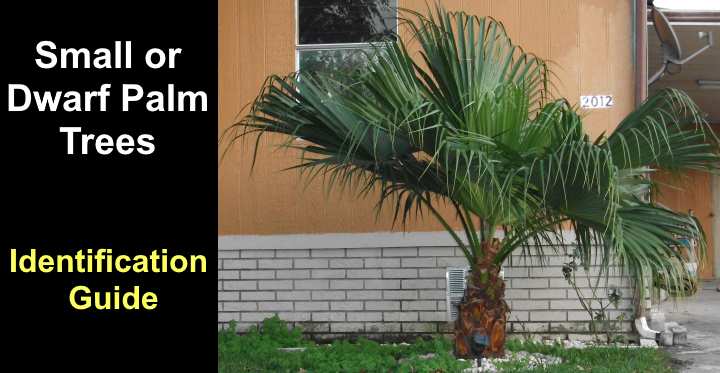
Small palm trees make a perfect addition to garden landscapes, especially in warm and sunny climates. Surprisingly, some varieties of small palms are also cold hardy, adding versatility to their appeal.
Dwarf palms are categorized as palm trees under 20 ft. (6 m) in height, typically featuring a single trunk, although some may have multiple trunks. Recognizable by their feather-like or fan-shaped fronds, all small or dwarf palm trees bring a touch of elegance and natural beauty to any outdoor space. Whether you’re seeking a tropical vibe or a compact focal point, these small palm trees offer a range of options for garden enthusiasts.
In this article, you’ll find some of the most popular species of small palms. You’ll find short palms that grow in warm climates such as Florida, and other dwarf palms that are cold hardy and can withstand freezing temperatures.
The Advantages of Small Palm Trees for Your Outdoor Space
One of the major benefits of planting dwarf palms in your front or backyard is their compact size, allowing them to fit perfectly without overshadowing your space or blocking sunlight. Some smaller palm varieties even thrive in containers, offering versatility in placement.
While small palms can reach heights of up to 20 feet (6 m), numerous miniature palm species remain at a manageable 5 feet (1.5 m) when fully grown. Additionally, contrary to popular belief, many small palm varieties are well-suited for temperate climates, expanding the options for palm enthusiasts
Small Palm Tree Facts
Small palm trees, such as the dwarf palmetto, typically grow to a height of about 4 to 6 feet (1.2 m – 1.8 m). On the other hand, taller varieties like the spindle palm can reach heights of up to 20 feet (6 m). Although a 20-foot palm tree may seem tall, it is still considered small compared to larger palm tree species that can grow as tall as 100 feet (30 m).
Compact palm trees are primarily cultivated in gardens for their visually pleasing appearance in the landscape. Their smaller size makes them ideal for planting in front yards or transforming a garden into a tropical oasis.
Most small palm tree varieties have a small root ball, allowing for close proximity to buildings. Thriving in warm climates, many small palm trees also bloom and bear deliciously sweet fruit .
How to Identify Small Palm Trees
Identifying species of small palm trees involves observing the shape of their leaves (fronds) and the characteristics of their trunks. Palm trees can be categorized into two main types based on their leaf structure : feather-like leaves (pinnate) or fan-like fronds (palmate). Additionally, various dwarf palms have distinct trunk features, including slender and smooth trunks or trunks with husks that create a spiky appearance.
The appearance of different palm species varies significantly. Some palms have slender trunks with a lush crown of gracefully arching fronds. Other palm types feature thick, hairy trunks that have a rough texture. Certain miniature palm species have a clumping, bush-like growth pattern , with leaves seemingly emerging directly from the ground, without a visible trunk.
Types of Small Palm Trees (With Pictures)
Here are the best dwarf or small palm trees to grow in your garden landscape.
Dwarf Palmetto ( Sabal minor )
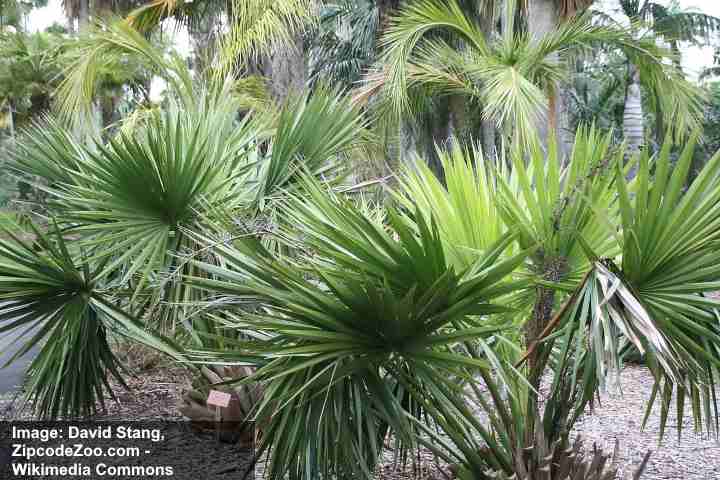
The Dwarf Palmetto is a cold-hardy miniature palm that thrives in a variety of habitats
The Dwarf Palmetto is a delightful miniature palm tree and one of the smallest palm tree species, reaching a height of 3 to 6 feet (0.9 to 1.8 meters). Its petite stature makes it an excellent choice for gardens with limited space.
The Dwarf Palmetto is a versatile palm plant that can thrive in partial shade or full sun, adapting well to different light conditions. It prefers well-draining soil with moderate moisture levels. With its compact size and easy-to-meet sun and soil requirements, it is an ideal choice for those seeking a charming and low-maintenance small palm tree that brings a taste of the tropics to their outdoor garden space.
The Dwarf Palmetto is classified as a Zone 7 to 10 plant according to the USDA hardiness zones, indicating its ability to withstand colder temperatures. It thrives in hot, humid conditions but is also cold tolerant to 0°F (-18°C).
Landscape applications of the Dwarf Palmetto palm tree are diverse. As native plants in Florida, they can be planted together in a backyard to create a lush and bushy privacy screen. Alternatively, you can cultivate them in containers on your patio, infusing a tropical ambiance to your outdoor space.
USDA Zone: 7-10
Sun Exposure: Full sun to partial shade
Plant Size: 3 to 6 feet (0.9 to 1.8 meters)
Dwarf Sugar Palm ( Arenga engleri )
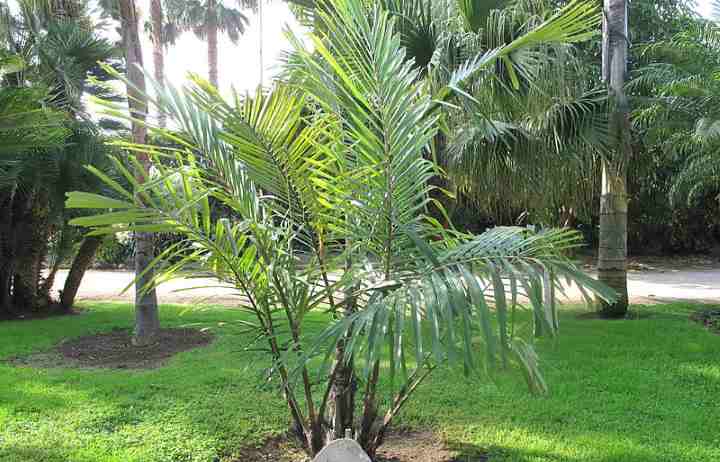
The dwarf sugar palm adds a decorative touch to a small front yard or backyard
The Dwarf Sugar Palm is a compact, multi-stemmed palm tree that reaches a height of 6 – 8 ft. (1.8 m – 2.4 m). Its clumping growth nature gives it a bushy appearance, resembling a large shrub. This small palm tree is characterized by vibrant green pinnate leaves that seem to emerge directly from the ground.
For optimal growth, the Dwarf Sugar Palm thrives in full sun, requiring a minimum of 6 hours of direct sunlight daily. It also prefers well-drained soil with good moisture retention, ideally with a slightly acidic to neutral pH level.
With its suitability for USDA zones 9 to 11, the Dwarf Sugar Palm is an excellent choice for gardeners residing in mild to warm climates. While it can tolerate temperatures as low as 25°F (-4°C), it is best to provide shelter from frost.
Landscape uses of this palm tree: The Dwarf Sugar Palm is an ideal option for those looking to create a stunning focal point without overwhelming their garden. Its petite stature allows it to thrive in various garden settings, including courtyards, patios, or even as a potted plant.
USDA Zone: 9-11
Sun Exposure: Full sun
Plant Size: 6 – 8 ft. (1.8 m – 2.4 m)
Pygmy Date Palm ( Phoenix roebelenii )
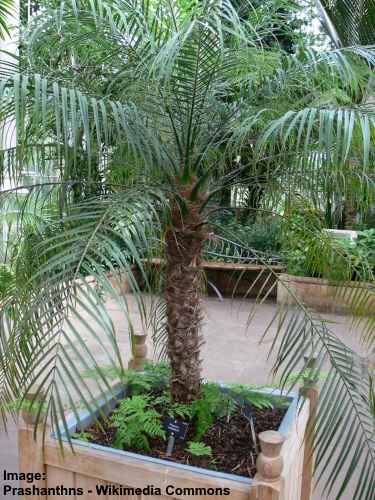
The pygmy date palm is a type of little palm tree with spiky trunk
The Pygmy Date Palm, also known as the Miniature Date Palm, is the perfect choice for gardeners seeking a small palm tree to enhance their outdoor garden space. With a compact size and an average height of 6 to 10 feet (1.8 to 3 meters), this palm tree is ideal for limited garden areas. Its unique feathery, arching fronds add an elegant and tropical allure to any landscape.
The Pygmy Date Palm is identified by a crowning mass of gracefully arching pinnate fronds. While typically a single-stemmed palm, it can occasionally develop multiple trunks, adding to its visual interest.
One of the distinguishing features of this small palm tree is its ability to produce small, edible dates when both male and female plants are present.
Thriving in full sun exposure, the Pygmy Date Palm requires a minimum of 6 hours of direct sunlight daily. It also adapts well to partially shaded areas, making it versatile for various garden settings. This palm tree prefers well-drained soil with good moisture retention and can tolerate a range of soil types, including sandy or loamy soil.
The Pygmy Date Palm is suitable for USDA hardiness zones 9 to 11, making it well-suited for gardeners residing in mild to warm climates. It can withstand temperatures as low as 20°F (-7°C) when mature, but young plants may require protection from frost.
Landscape uses of this palm tree: Grow pygmy date palms to accent a Mediterranean garden landscape. The mini palm tree is also a suitable container plant to keep indoors during winter.
Plant Size: 6 to 10 feet (1.8 to 3 meters)
Bottle Palm ( Hyophorbe lagenicaulis )
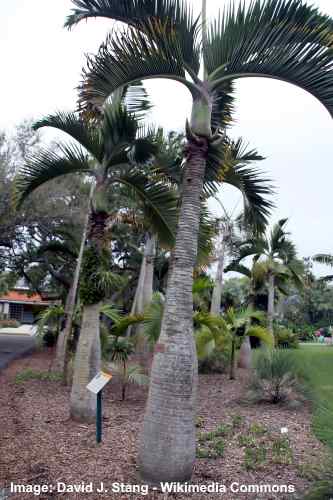
The small ornamental Bottle palm tree has a thick short trunk
The Bottle Palm is an exquisite small palm tree with an average height ranging from 10 to 12 feet (3 to 3.6 meters). It is known for its distinctive bottle-shaped swollen trunk, which gives it its unique name. This mini palm tree has elegant, arching, feather-like fronds that can grow up to 12 ft. (3.5 m) long, further enhancing its visual appeal.
As the Bottle Palm matures, its trunk elongates and develops a husky exterior, adding to its charm. These short bottle palm trees thrive in warm climates like Florida and southern California , where they can enjoy year-round warm temperatures. Full sun exposure is essential for the optimal growth of these small palms.
To ensure healthy growth, it is recommended to plant the Bottle Palm in a location that receives a minimum of 6 hours of direct sunlight daily. This palm tree prefers well-drained soil with good moisture retention and can adapt well to various soil types, including sandy or loamy soil.
The Bottle Palm is suitable for USDA zones 10 to 11, making it an ideal choice for gardeners residing in mild to warm climates. It can tolerate temperatures as low as 30°F (-1°C) but should be protected from frost.
Landscape uses of this palm tree: The small bottle palm trees, characterized by their distinctive bottle-shaped trunks and graceful fronds, are perfect focal points in compact landscape designs. In colder climates, they can be grown in containers, allowing gardeners to bring them indoors and provide protection from frost.
USDA Zone: 10-11
Plant Size: 10 to 12 feet (3 to 3.6 meters)
Pindo Palm ( Butia capitata )
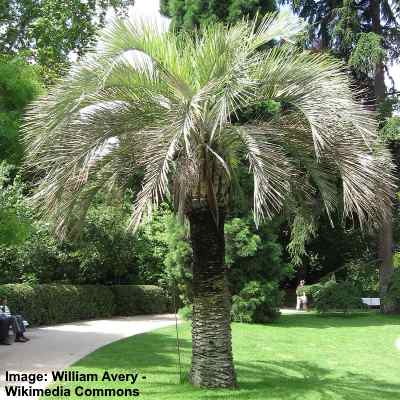
The small Pindo palm tree is a slow growing and cold-hardy and is excellent for compact outdoor residential area
The Pindo Palm (also known as the Jelly Palm) is a slow-growing, small tree that reaches heights of 15 – 20 ft. (4.5 – 6 m). The Pindo Palm is recognized by its elegant feather-like fronds and silver-gray foliage, giving it a tropical and attractive appearance. The fruits of the Pindo Palm are bright yellowish-orange and have a sweet, tart-like flavor, making them a great ingredient for jellies and jams or general consumption.
For optimal growth, the Pindo Palm thrives in 6-8 hours of direct sunlight, although it can tolerate partial shade. It requires well-draining soil to prevent root rot. The Pindo Palm is cold hardy, capable of tolerating temperatures down to around 14°F (-10°C).
The Pindo Palm is highly drought-tolerant, making it an excellent choice for regions with dry climates or limited water availability. Proper irrigation during the establishment phase is crucial for promoting its healthy development and growth.
The Pindo Palm’s compact size makes it suitable for small gardens, urban landscapes, or container gardening. With its slow growth rate and low maintenance requirements, it is a popular choice for homeowners looking for a visually appealing, easy-to-care-for palm tree.
USDA Zone: 8-11 Sun Exposure: Full sun to partial shade Plant Size: 15 – 20 ft. (4.5 – 6 m)
Saw Palmetto ( Sereona )

Saw palmetto is a multi stem low palm with bushy appearance that can also grow in a container
Native to Florida, the saw palmetto is a low-growing palm tree that reaches a height of 3 – 6 ft. (0.9 – 1.8 m). It is characterized by its distinctive, silvery-green fan-shaped fronds and dense, clumping growth habit. The edges of its leaves are serrated, which is why this small palm tree is named the saw palmetto. Being a type of clustering palm, this palm tree has multiple stems growing from the ground.
The fruits of the saw palmetto are small berries that are initially green but turn dark purple or black when fully ripe. These berries are not usually consumed, instead they are known for their medicinal properties and are often used in herbal supplements.
The saw palmetto requires full sun exposure of around 6 hours a day. This palm tree prefers well-drained soil and can tolerate both dry and moist conditions, making it adaptable to a variety of landscapes.
The saw palmetto can tolerate harsh environmental conditions such as drought, as well as temperatures down to around 10°F (-12°C).
The saw palmetto is a highly desirable palm tree among homeowners due to its low maintenance requirements and ability to add charm and beauty to outdoor spaces. Its ease of care makes it an ideal choice for those seeking a hassle-free addition to their gardens or landscapes.
USDA Zone: 8-11
Plant Size: 3 – 6 ft. (0.9 – 1.8 m)
Windmill Palm ( Trachycarpus fortunei )
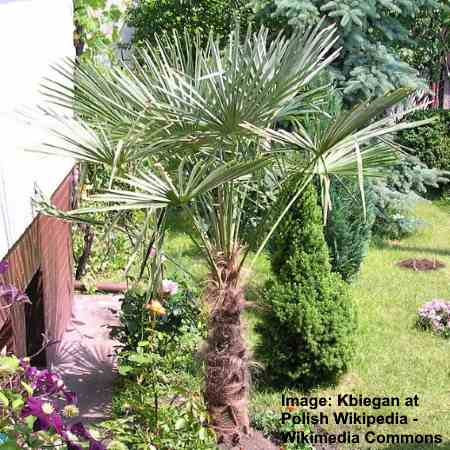
The windmill palm tree is very hardy and slow growing small palm
The windmill palm is a slow-growing, dwarf palm tree that typically reaches heights of 10 – 20 ft. (3 – 6 m). Its short, slender trunk has a gray-brown coloration and is covered with a dense layer of coarse, fibrous material, giving it a distinctive, hairy texture. At the top, the windmill palm has a crown of large, fan-shaped leaves that can span up to 3 ft. (1 m) in diameter. In springtime, it produces clusters of small yellow blossoms.
The windmill palm thrives in partial shade to full shade, although it can tolerate full sun as well. It prefers fertile, well-draining soil, though it can tolerate a range of soil types, including sandy, loamy, and clay soils, as long as they are not excessively alkaline or saline.
The windmill palm can tolerate minimum temperatures as low as 10 – 15°F (-12 to -9°C), making it suitable for regions with colder climates.
The windmill palm is a versatile palm tree that can be grown in pots, making it perfect for small gardens, patios, balconies, or rooftop gardens.
USDA Zone: 7-11
Sun Exposure: Prefers partial shade to full shade
Plant Size: 10 – 20 ft. (3 – 6 m)
King Sago Palm ( Cycas revoluta )
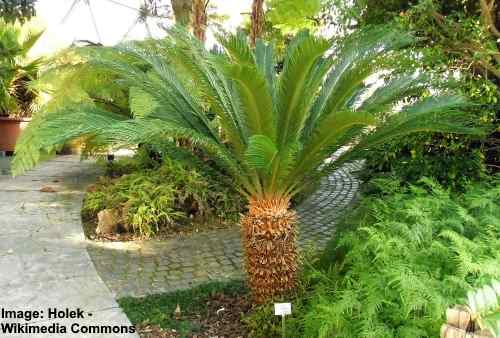
Sago palm is very slow-growing and can reach 20 ft. (6 m) after many decades
The king sago palm is not a true palm tree, but rather a slow-growing, small-sized cycad, reaching a height of 8 – 10 ft. (2.4 – 3 m). The king sago palm is easily identified by its crown of green, feather-like arching fronds, growing in a rosette pattern. The palm has a short, shaggy trunk. One of the most distinctive features of the king sago palm is the flower head, also known as a cone, that emerges from the center of the tree every three to four years. The cone consists of tightly packed scales and is usually a golden or brown color. The male cone features a taller and slender appearance, while the female cone is shorter and stockier.
The king sago palm is well-suited for warm, humid regions. It requires ample sunlight, ideally around 6 to 8 hours per day, to maintain its vibrant green color and healthy growth. The tree also prefers well-drained soil, and while it can tolerate some drought conditions, it thrives best with regular moisture to keep its roots hydrated.
The king sago palm thrives best in the temperature range of 65 – 75°F (18 – 24°C), though it can tolerate colder temperatures of up to 14°F (10°C).
Maintenance for the king sago palm is relatively low, making it a popular choice among gardeners. Regular watering, especially during dry spells, is essential to keep the tree healthy. When the fronds are of a brownish shade, it is recommended to trim them to help maintain its attractive appearance.
The king sago palm serves as an excellent accent or focal point in gardens, patios, and even indoor spaces. Its compact size makes it suitable for containers and small garden spaces.
Sun Exposure: Ample sunlight
Plant Size: 8 – 10 ft. (2.4 – 3 m)
Needle Palm ( Rhapidophyllum hystrix )

Needle palm is cold hardy and can grow as a miniature patio palm
The needle palm tree is a small, multi-stemmed, shrub-like palm with sharp, black needles on its spine. It can reach a height of 3 – 6 ft. (1 – 1.8 m), with a spread of up to 8 ft. (2.4 m). The compact palm has dense and bushy foliage. It is characterized by its glossy, fan shaped leaves which can grow up to 15 to 20 inches long (38 to 51 centims). The leaves have a vibrant green color on the top side and a silvery color on the underside. The tree has a stout trunk covered in rough, fibrous bark. It produces dense clusters of small, yellow to brownish flowers during the summertime.
The needle palm tree is cold hardy , capable of withstanding temperatures down to around 5°F (-15°C). It is drought-tolerant, and can be grown in either shade or full sun. It prefers well-drained soil, but can adapt to many soil types.
The needle palm is an excellent focal point in any outdoor garden, thanks to its distinctive leaves and rugged appearance. It is particularly suitable for enhancing a tropical atmosphere, especially in colder climates. With its bushy foliage, the needle palm can be effectively utilized to create privacy screens or hedges. The bushy palms also grow well in containers as an ornamental low-growing tree or specimen plant.
Sun Exposure: Can tolerate sun or shade
Plant Size: 3 to 6 ft. (1 – 1.8 m)
Parlor Palm ( Chamaedorea elegans )
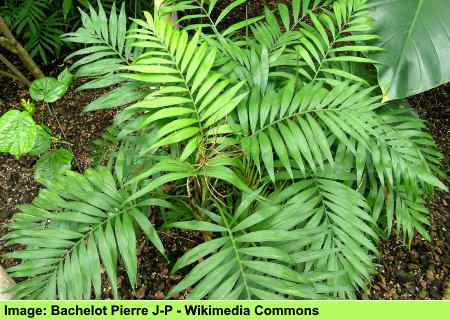
The parlor palm can be grown indoors as a houseplant or outdoors in small spaces
The parlor palm is a small palm tree that typically reaches a height of 4 to 6 ft. (1.2 to 1.8 m). The tree is known for its pinnate foliage with long broad leaves on the stems. Parlor palm trees grow from a single thin, slender trunk that divides into many thick branches. The flowers bloom in late winter to early spring. The female flowers are round and petal-less, while the male flowers are smaller, yellow, and green. If the flowers are pollinated, black fruits with seeds form, enabling propagation.
The parlor palm grows best in bright, indirect light and can tolerate partial shade. Direct sunlight can cause the leaves to burn and turn into a yellowish color. It thrives in well-drained soil. Maintenance is relatively low, though the plant will need to be watered once a week. If the palm has brown tips on the end of its leaves, it may indicate that the air is too dry, the environment is too cold, or that you have either under-watered or over-watered the plant.
The Parlor Palm is a resilient plant that can withstand temperatures as low as 50°F (10°C). However, it is highly susceptible to frost and can perish if exposed to freezing conditions.
Parlor palms are one of the most popular types of indoor palms . However, these palm plants can also be used in various outdoor landscapes , particularly in semi-shaded garden areas.
USDA Zone: 10-10b
Sun Exposure: Prefers bright, indirect sun
Plant Size: 4 – 6 ft. (1.2 – 1.8 m)
Spindle Palm ( Hyophorbe verschaffeltii )
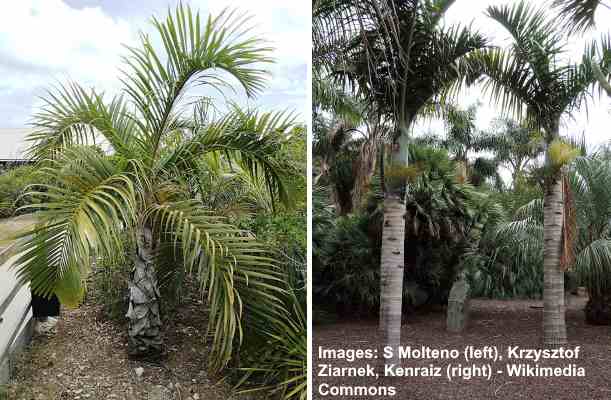
Young Spindle palm (left) and mature tree (right)
The spindle palm is a small palm tree that can reach a height of approximately 10 to 20 ft. (3 – 6 m). This mini palm is known for its slender, spindle-shaped gray trunk. The palm has a crown of curved, green pinnate leaves, which bulge from its center. The spindle palm produces small flower clusters that typically appear in clusters at the base of the crown.
The spindle palm thrives in full sun but can also tolerate light shade. It has a preference for well-drained, fertilized soil. The palm tree is drought-tolerant and salt-tolerant, making it suitable for coastal regions and landscapes. The ideal temperature range is around 60 – 85°F (15 – 29°C).
The spindle palm has a tropical look that makes it a great choice for creating lush and exotic landscapes. It is often used as focal points in tropical gardens or in coastal landscaping projects. The palm is most often used outside, though they are fairly common as indoor plants. Also, spindle palms grow well in containers if you live in temperate climates.
USDA Zone: 9b-10
Sun Exposure: Full sun, can tolerate light shade
Coontie Palm ( Zamia floridana )
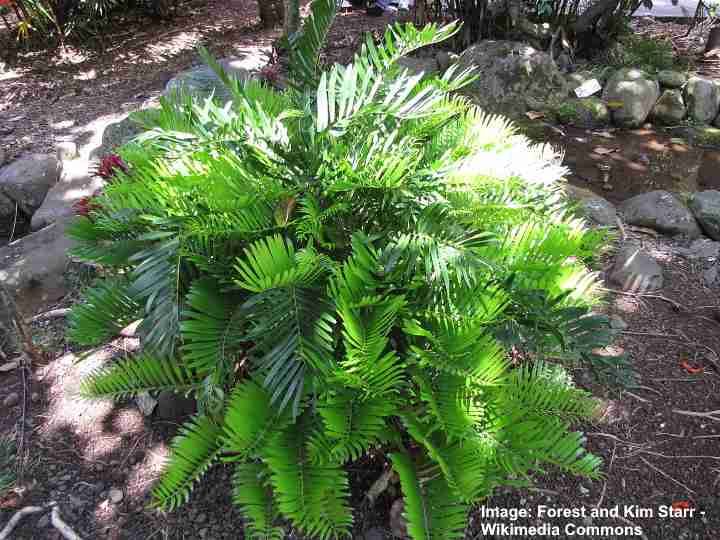
The low growing coontie palm looks like a type of bushy palm with rounded appearance
The coontie palm is a low-growing palm tree, native to Florida . It is characterized by its glossy, light-green, fern-like leaves. It is not a true palm, but rather a woody cycad. Coontie palms are more like bushes rather than actual palm trees. Over time, the palm grows a multi-branch cluster of fronds from the ground. The palm can reach a height of up to 3 ft. (1 m). The palm does not produce flowers or fruits, instead it produces reddish-brown cones with bright orange seeds, which can be used for propagation.
The coontie palm prefers full sun to partial shade. Although they can handle lower temperatures, it is recommended to grow the palm between temperatures of 75 – 90℉ (25 – 32℃). It prefers well-drained soil.
Coontie palms can be planted in large pots to create a tropical and visually appealing feature for patios, entryways, or pool areas. Their unique appearance with feathery foliage can add an exotic touch to your garden.
Plant Size: 3 ft. (1 m)
Triangle Palm Tree ( Dypsis decaryi )
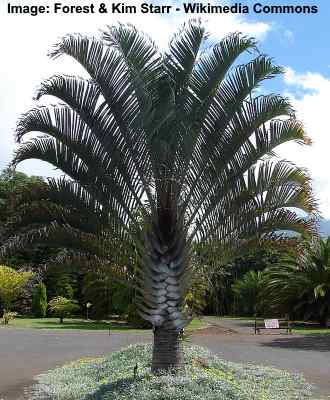
The small triangle palm has pinnate fronds that fan out from a single trunk
The triangle palm tree is a small to medium-sized palm distinguished by the unique triangular shape of its leaflets. It can reach heights of up to 25 – 30 ft. (7 – 9 m). The palm has a short trunk and long, gray-green to blue-green palmate leaves. This spectacular tree can have leaves up to 8 ft. (2.4 m) long that fan out from the thick central trunk.
As a flowering palm, the triangle palm can produce spectacular yellow-green flowers throughout the year, given the right conditions. These stunning flowers emerge on flowering stems that can grow over 3 ft. (1 m) in length.
The triangle palm tree is of low-maintenance and survives heat and drought well. It grows best in well-drained soil and full sun, though it can tolerate poorer soil and partial shade. It grows considerably fast when compared to other palms. It thrives best in tropical climates with temperatures of 70 – 85℉ (21 – 29℃).
Plant this palm as a focal point in landscape designs, thanks to its unique shape and eye-catching appearance. It can also be planted in groups to create a dramatic effect.
Plant Size: 25 – 30 ft. (7 – 9 m)
Mediterranean Dwarf Palm or European Fan Palm ( Chamaerops humilis )

The Mediterranean dwarf palm (European fan palm) has several trunks and is small enough to suit many gardens
The Mediterranean dwarf palm is a low-growing clumping palm with three or more trunks at its base. This bushy multi-trunk palm tree can grow to between 10 – 20 ft. (3 – 6 m) tall and reach a width of up to 10 – 15 ft. (3 – 4.5 m). Its trunks have a rough, barky texture, and are brownish in color. A compact crown of rounded fan leaflets of a green to blue-green color grace the tops of the small trunks. The trunks grow slowly and are often tightly packed to each other. In spring, the palm produces flowers of a golden-yellow color.
The Mediterranean dwarf palm is a popular landscape palm in countries that enjoy hot summers. However, the palm is also cold hardy, withstanding temperatures as cold as 10°F (-12°C). It grows best in full-sun to partial shade. The palm prefers loamy, well drained soil, though it can tolerate a range of different soil types. It is drought tolerant and can thrive in a range of different environments.
The Mediterranean dwarf palm offers great landscaping potential with its compact size and attractive features. Use it in your garden to create visual interest and add a touch of elegance. Planting the palm tree in containers outdoors can help to control its height if you want to add a Mediterranean touch to your patio or decking area.
Plant Size: 10 – 20 ft. (3 – 6 m)
Florida Thatch Palm ( Thrinax radiata )
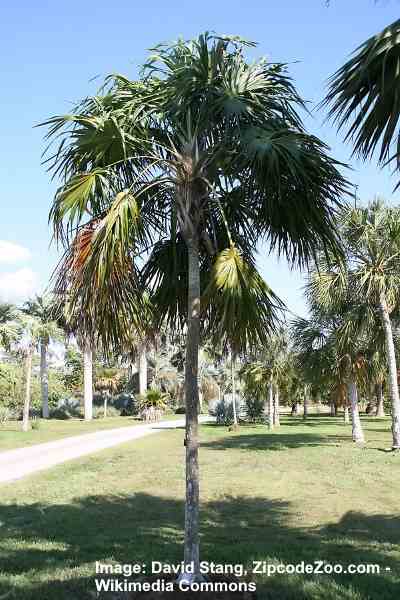
Florida Thatch Palm is commonly grown as a landscaping tree in residential areas
The Florida thatch palm is a small palm tree which can grow up to a height of 20 ft. (6 m). It features a single slender stem and a captivating canopy of deep-green palmate leaves. At the top of the tree, the underside of these leaves displays a striking silver hue. When growing in full sun, the fanning crown of palm leaves has a compact growth in a globular shape.
Florida thatch palms are popular residential landscape palms in Florida and other states in the southern U.S. This palm tree produces white flowers that bloom during late spring or early summer.
The Florida thatch palm thrives in full sun but can also tolerate partial shade. It prefers more coastal, warm climates, and is grown often in South Florida. The palm is drought-tolerant and salt-tolerant. It prefers sandy soil.
The Florida thatch palm is an ideal choice for small spaces, as it maintains a compact size. Plant this palm to give your landscape a tropical, beachy atmosphere. The palm is well-suited for narrow areas, as well as container planting.
Plant Size: 15 – 20 ft. (4.5 – 6 m)

Dwarf Majesty Palm ( Ravenea hildebrandtii )

Dwarf majesty palm
The dwarf majesty palm is a single-trunk palm tree that doesn’t grow taller than 8 ft. (2.4 m). The dwarf palm has dark green pinnate leaves and a slender trunk that is only 3” (7 cm) thick.
The dwarf Majesty palm tree ( Ravenea hildebrandtii ) is a popular ornamental palm with large wide arching leaves. The large wide arching leaves look majestic as the focal point of any subtropical ornamental garden. The bright green leaves can grow up to 3 ft. (100 cm) long and have up to 100 leaflets growing along the stem.
Majesty palm is one of the best potted palm trees to grow outdoors .
Mazari Palm ( Nannorrhops ritchiana )

Mazari palm is a small shrubby cold-hardy palm tree
The Mazari palm is a small, cold-hardy palm tree. It can reach a height of up to 10 – 20 ft. (3 to 6 m). The Mazari palm has palmate (fan-like) leaves of a blue-green to gray-green hue that grow on clusters of stems. The long, fan-shaped leaves can measure between 1 to 4 ft. (30 – 120 cm) long, which give it a shrubby, spiky appearance. The palm produces white flowers, which are arranged in tall clusters up to 10 feet (3 meters) long at the tip of the stems.
Like other types of cold-hardy palm trees, the Mazari palm needs hot summers to grow well. However, this species is also cold-hardy down to 10 °F (−12 °C). It is a sun-loving plant and grows best in full sun. The palm prefers well-drained, loamy soil, though it can adapt to other soil types. It is drought tolerant.
USDA Zone: 6-11
Plant Size: 10 – 20 ft. (3 to 6 m)
Cat Palm ( Chamaedorea cataractarum )
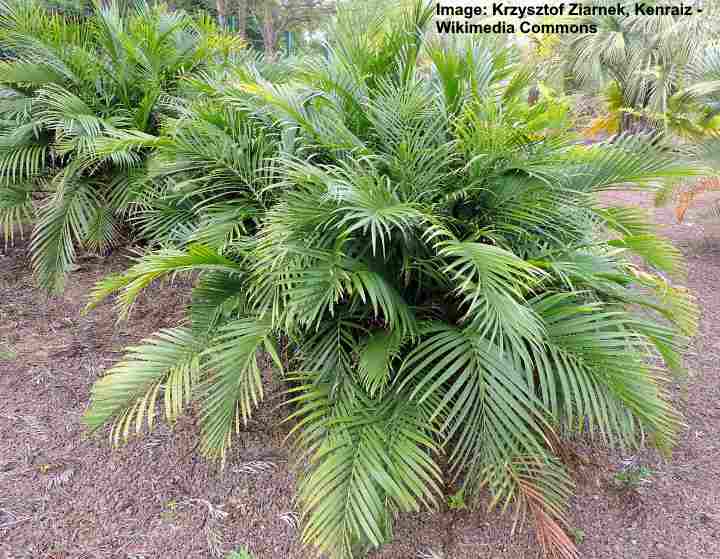
The multi-stemmed small cat palm is a great choice for small outdoor area
The cat palm tree is a clumping bushy palm plant with multiple stems growing from the ground. Growing up to 6.5 ft (2 m) in gardens, the short cat palm tree has glossy dark green leaves forming dense palm foliage. Cat palms require bright sunlight to thrive and a moist growing medium.
Due to the palm’s bushy growth habit and short stature, you can grow cat palms as a privacy hedge in tropical gardens. Cat palms also grow well in containers to add tropical greenery to a patio or decking area. These multi-stemmed palms are also popular indoor palm trees if you can grow them in bright light.
Discover many other types of palm trees to plant in your garden .
Sun Exposure: Full to partial shade
Plant Size: 6.5 ft (2 m)
Arikury Palm ( Syagrus schizophylla )

The Arikury palm is an attractive dwarf tree suitable for small sunny gardens or compact spaces
The arikury palm is a decorative dwarf palm tree with arching, bright green palmate leaves. Each palm frond has many long sword-shaped leaflets. This popular dwarf palm tree is characterized by its spreading crown, leaves with jagged edges, and bright orange-yellow flowers blooming on long, dangling stems growing 3 ft. (1 m) long.
The sun-loving arikury palm grows up to 6 ft. (1.8 m) tall, making it suitable for small gardens. Its arching fronds can measure 4 to 6 ft. (1.2 – 1.8 m), identified by a unique feature — thin purple-black stems with hooked spines near the base.
The dwarf arikury palm thrives in full sun in USDA zones 10 to 12.
Landscape uses of this palm tree: This heat-loving palm is compact and small, making it suitable for container planting to decorate patios or decks in tropical landscapes.
USDA Zone: 10-12
Plant Size: 6 ft. (1.8 m)
Florida Cherry Palm ( Pseudophoenix sargentii )
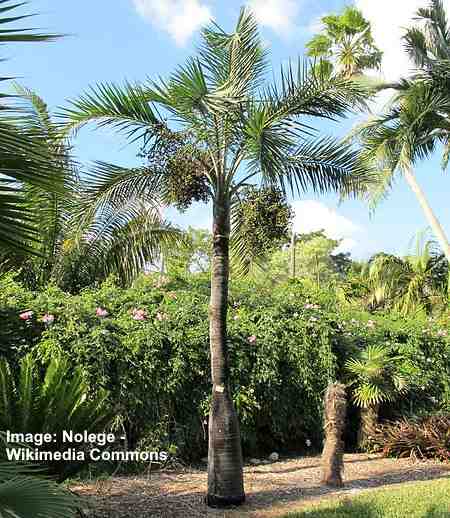
Florida cherry palm is a small to medium sized tree which is slow growing and cold sensitive
Also called the buccaneer palm, the native Florida palm tree is identified by its slender, smooth erect stem that bulges at the base. Other features of this exotic palm tree are its ringed trunk patterns, silver-green leaflets, and long branches that gracefully arch at the top of the stem.
The Florida cherry palm tree is a medium-sized palm. However, growing it in a container limits its size, making the small palm suitable for growing in a planter. Growing in the ground, this slender palm grows 10 to 25 ft. (3 – 7.6 m) tall and is characterized by a wide, spreading canopy.
Because it is slow-growing and relatively small — the height of some specimens maxes out at 10 – 12 ft. (3 – 3.6 m), it is suitable for compact tropical gardens.
Suitable for USDA zones 10 and 11, the slow-growing buccaneer palm has excellent salt and drought tolerance.
Landscape uses of this palm tree: The Florida cherry palm is ideal for growing in coastal areas because it tolerates salty air and high humidity. It also makes a great accent plant in any landscape where you want to add height and interest.
Plant Size: 10 to 25 ft. (3 – 7.6 m)
Broadleaf Lady Palm ( Rhapis excelsa )

The Broadleaf Lady palm is a stunning multi-stemmed tree that can be cultivated in a pot within the comfort of your own home.
The broadleaf lady palm is a multi-stemmed palm tree with palmate leaves in fan shapes. Characteristics of this clustering bushy palm are its dark green, glossy narrow leaflets, slender, erect cane stems, and clusters of tiny yellow flowers. The attractive, easy-to-grow outdoor palm tree thrives in partial sun and shade, making it highly versatile in landscapes.
The hardy, drought-tolerant palm tree grows 6 to 15 ft. (1.8 – 4.5 m) tall and wide. Its common name comes from the finger-like narrow pointed leaflets growing on the stems. The palm resembles bamboo plants in many ways due to its reed-like stems.
The popular dwarf palm is suitable for USDA zones 9 through 11. In temperate climates, the lady palm is a popular indoor plant that grows well in pots and tolerates low light and humidity.
Landscape uses of this palm tree: Its clumping nature and dense foliage make the lady finger palm ideal in landscapes as a hedge or privacy screen. It also grows well as a container plant on patios.
Sun Exposure: Full sun to shade
Plant Size: 6 to 15 ft. (1.8 – 4.5 m)
Golden Cane Palm ( Dypsis lutescens )
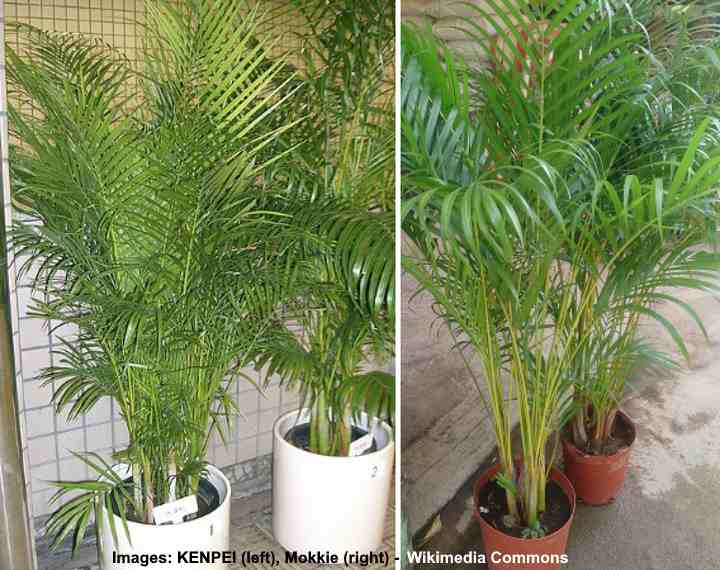
The golden cane palm (also known as areca palm) can be grown indoors and will give a tropical look to any space
The golden cane palm is a relatively low-growing bushy palm plant suitable for compact garden landscapes. The attractive shrub-like palm is characterized by dark green V-shaped fronds measuring 6 to 8 ft. (1.8 – 2.4 m) tall, lance-shaped leaflets, a multi-stemmed trunk, and small egg-shaped fruits.
Also called the areca palm or yellow bamboo palm, the bushy palm grows 20 to 35 ft. (6 – 10 m) tall, and its crown spreads 10 to 20 ft. (3 – 6 m) wide. In a landscape, the golden cane palm requires plenty of water, full sun to partial shade, and grows in well-drained soils.
Like the lady palm, the golden cane palm is a popular plant to grow in containers indoors.
Landscape uses of this palm tree: Growing in a garden landscape, the bushy golden cane palm is ideal as a natural fence, to grow along a wall, or to use as an accent plant.
Plant Size: 20 to 35 ft. (6 – 10 m)
Madagascar Palm ( Pachypodium lamerei )
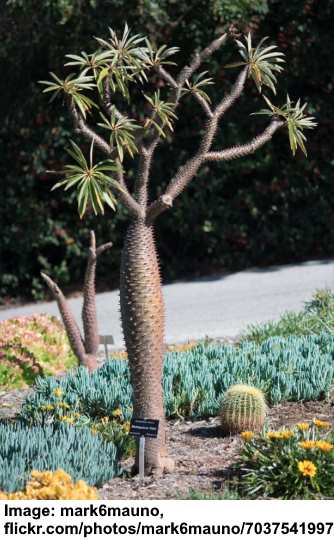
Madagascar palm is a small palm-like tree that can give a beautiful focal point to compact spaces
The Madagascar palm is a small deciduous tree unrelated to true palm trees . The palm-like tree is identified by its cigar-shaped spiny trunk, strap-shaped glossy green leaves, banana-shaped seed pods, and large saucer-shaped white flowers. As the plant matures, the base becomes swollen and fat.
The Madagascar palm tree is ideal for compact gardens due to its dwarf growth habit. The Madagascar palm grows 10 to 20 ft. (3 – 6 m) tall and up to 8 ft. (2.4 m) wide. Its large leaves grow 12” (30 cm) long, and its curled seed pods are 8” (20 cm) long. After the plant reaches 5 ft. (1.5 m) tall, it starts to branch at the top.
Landscape uses of this palm tree: The Madagascar palm looks spectacular as a specimen tree or growing in containers outdoors on a patio.
Plant Size: 10 to 20 ft. (3 – 6 m)
Loulu Palm Trees (Pritchardia spp.)
Loulu palm trees are native to Hawaii and vary in size from tall trees that can reach 50 ft. (15 m) tall to small or dwarf trees that reach up to 16 ft. (5 m) tall. They have a single trunk and are identified by large fan fronds on stalks measuring 2 to 10 ft. (0.6 – 3 m) long. Some species of Pritchardia have graceful arching branches with pleated round fronds. However, other varieties have drooping or weeping branches.
The fruits of Loulu palms are oval or spherical and grow in large clusters under the branches at the tree’s crown. The fruits can measure 0.75” to 2” (2 – 5 cm), depending on the species of the palm tree.
Some small species of Loulu palm trees include:
Pritchardia remota — A small palm tree endemic to the Hawaiian island Nihoa that typically reaches 13–16 ft. (4–5 m) tall. It has a slim ringed trunk, dense crown with fan-shaped leaves with drooping tips, and a small dark brown or black fruit.
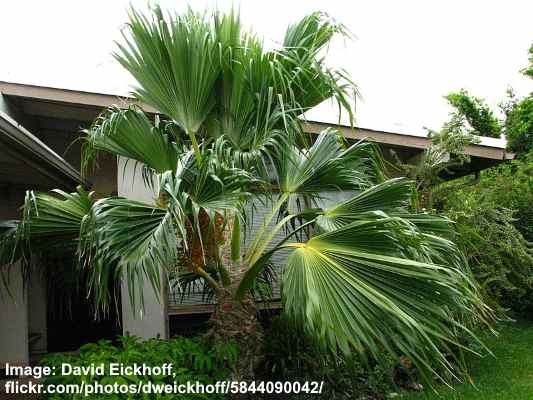
Pritchardia remota
Pritchardia munroi —A short Hawaiian palm growing 16 ft. (5 m) tall. It has drooping fan fronds that cover the entire tree, almost hiding the broad trunk from sight. It is native to dry and moist forests. Native to the Hawaiian islands Molokai and Maui.
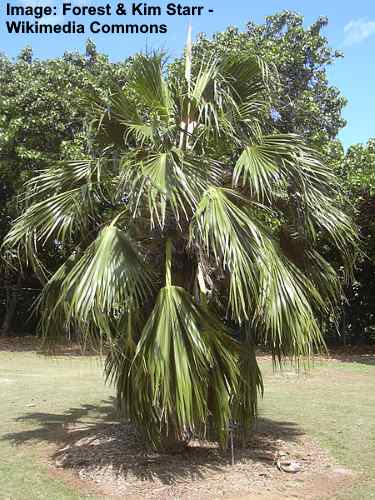
Pritchardia munroi
Pritchardia glabrata —This slow-growing dwarf Hawaiian palm grows 6.5 to 16 ft. (2 – 5 m) tall. It has an open crown with fan leaves, each measuring about 2 ft. (0.6 m) long. Native to Lanai and West Maui.
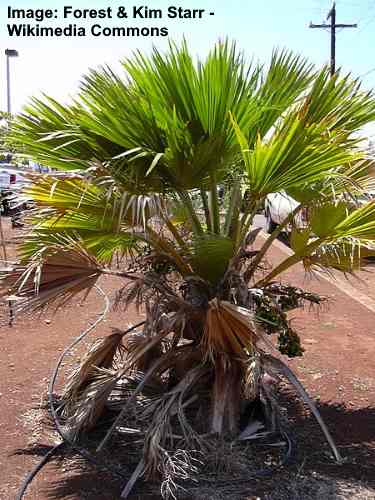
Pritchardia glabrata
Adonidia Palm ( Adonidia merrillii )

The small Adonidia palm tree is an excellent plant for landscaping when space is limited
The Adonidia palm, also known as the Christmas palm, is a palm tree characterized by its slender, smooth gray trunk. Although it can reach a height of up to 25 feet (7.62 meters), its growth rate slows significantly after reaching 6 ft. (1.8 m). Its graceful crown is adorned with long arching fronds that can spread up to 8 ft. (2.4 m) in width.
One of the benefits of cultivating this palm in your yard is its self-cleaning nature and low maintenance requirements. The Adonidia palm sheds its fronds more rapidly compared to other palm species, resulting in a consistently appealing appearance.
The Adonidia palm thrives in sunny locations, requiring full sun exposure to ensure optimal growth and development. It prefers well-draining soil with a slightly acidic to neutral pH level. Good soil drainage is crucial to prevent waterlogging, as excessive moisture can harm the roots of this small palm tree.
The common name ‘Christmas palm’ is derived from the palm fruit , which ripens in December, coinciding with the holiday season.
The small Adonidia palm thrives in USDA zone 10.
Landscape uses: Plant the Adonidia palm as a specimen tree to create a focal point in a sunny, tropical garden. In a front or backyard, you can plant the palm trees close together as they have a small root ball.
Plant Size: 25 feet (7.62 meters)
Related articles:
- Small or Dwarf Evergreen Trees For Your Garden
- Small or Dwarf Weeping Trees for Landscaping
- The Best Indoor Palm Plants
- How to Grow Indoor Palm Trees as Houseplants
How to Grow and Care for Cat Palm Indoors
:max_bytes(150000):strip_icc():format(webp)/alexandra_jones-5d61400cc7c44bb690abbaefb2c0cd19.jpg)
The Spruce / Adrienne Legault
How to Grow Cat Palm Indoors
Container and size, potting soil and drainage, potting and repotting, moving cat palm outdoors for the summer.
Cat palm , also called cascade palm or cataract palm, is known for its elegant fronds that grow from a cluster of slender green stems. This beginner-friendly, tropical houseplant thrives when planted in well-draining soil, placed in bright, indirect light, and kept in room temperature conditions.
Can You Grow Cat Palm Inside?
As a tropical plant, cat palm grows well inside, as they appreciate typical indoor temperatures and humidity. The right lighting is crucial, as cat palms need bright, indirect light. In the proper soil and with correct watering, these plants can grow quite large and be rewarding even for beginners.
Cat palms grow best with lots of bright, indirect light. Direct morning sunlight from an east-facing window is generally okay, but harsh direct sun can burn the leaves. Rotate your plant periodically to give all the foliage enough light exposure.
Temperature and Humidity
Cat palms prefer temperatures between 70 to 80 degrees during the day and in the 60-degree range at night. Temperatures below 50 degrees can damage its foliage. This plant benefits from at least 50 percent humidity.
Water your cat palm when the top of the soil has just begun to dry out. One of the most common issues with cat palms is root rot from overwatering, so do not water too often. Check saucers and cache pots to make sure your plant isn't sitting in excess water after watering.
Feed cat palms with a balanced liquid houseplant fertilizer diluted to half strength once per month starting in early spring, or when you first see new growth at the start of the season. Stop fertilizing in the fall.
Pruning and Maintenance
Cat palms don't need regular pruning to look healthy, but they benefit from occasional tidying up. Use clean, sharp, sterilized shears or pruners to cut back yellow, dead, or damaged fronds at the base of the plant as they appear.
When choosing a container for your cat palm, terracotta or clay is best, because these materials wick away excess moisture. Though a cat palm ultimately may grow large, choose a pot that matches the plant's current size, for now.
You want a container that is just slightly bigger than the root ball. If you put your cat palm in a container that is too large, you increase the likelihood of rot.
Cat palms don't like "wet feet," so it's important to plant them in a loose, fast-draining potting mix that will hold moisture while allowing excess water to drain away. You can purchase a pre-made mix specifically created for palms, or make your own by combining potting mix with equal parts pine bark and perlite.
Cat palms are slow-growing plants, especially when kept indoors. They also don't respond well to having their roots disturbed, so it's better to let them become slightly potbound before repotting. Plan to repot your cat palm every three years or so.
When repotting, choose a pot that is only a couple inches wider than the current pot. Carefully remove the plant from its old pot, place it in the newer pot, and backfill around it with a well-draining potting mix.
Moving a cat palm outdoors for the summer provides the plant with natural conditions and can boost its growth. However, it's important to do so only when the temperatures are correct, and the plant should not be placed in direct sunlight.
Considerations
Cat palms prefer warm temperates, so they shouldn't be moved outdoors until night conditions are regularly above 55 or 60 degrees Fahrenheit. These plants are not frost-tolerant, and freezing conditions will kill them.
Additionally, cat palms should not be placed in direct sun, which will burn their fronds. Partial or dappled shade is ideal. And regardless of where you plan to keep the cat palm all summer, you will need to transition it to outside conditions over the course of a few days to avoid shock or burning.
When to Bring Cat Palm Back Inside
As summer begins to wind down, keep your eye on the night forecast. Don't forget to bring your cat palm indoors before it gets cold again. Remember, these plants prefer temperatures above 60 degrees, even at night. When the night temperatures are consistently in the 50s, it's time to move your cat palm back inside.
Give your cat palm a close pest inspection before it re-joins your other houseplants. Back inside, put it in a warm, bright area.
Cat palms grow best in bright, indirect light. A few hours of direct sun in the morning is okay, but harsh afternoon sunlight can burn your plant's leaves.
Cat palms like humidity levels over 50 percent, but misting doesn't recreate the humid environment many houseplants need and can even create the conditions for plant diseases to take hold. Instead, run a humidifier in the room with your cat palm, or group it with several other humidity-loving plants to create a microclimate with more moisture in the air.
Mature cat palms can be easily propagated via division. Remove the plant from its pot, and you should see easily dividable sections. Using a clean knife or pruners, sever a section with some roots. Pot the new plant in potting soil and water well.
There are multiple reasons a cat palm's fronds could be yellowing and/or browning, but one of the most common is too much sun. These plants should not receive more than a few hours of direct sunlight per day, and harsh, midday sun can burn them. Overwatering can also cause yellowing leaves. Use a moisture meter to evaluate the soil, and only water once it's dry.
Garden Myths. Penn State Cooperative Extension.
More from The Spruce
- Cissus Discolor Is a Climbing Plant That Will Add Red to Your Garden—How to Grow It
- How to Grow and Care for Bamboo Palms So They Thrive
- How to Grow and Care for Neanthe Bella Palm
- Kangaroo Paw Ferns Are the Perfect Hanging Houseplant—Here's How to Grow Them
- Hoya 'Krimson Queen' Is A Perfectly Pink Low-Maintenance Houseplant—How to Grow It
- How to Easily Grow Calathea Roseopicta in Your Home for Show-Stopping Leaves
- How to Grow and Care for Kentia Palm
- Alocasia Sarian Is the Perfect Houseplant for Your Bathroom—Here's How to Grow It
- How to Grow Anthurium Veitchii, the Rare Tropical Plant You Need
- How to Grow and Care for Parlor Palm
- How to Grow and Care for Lady Plant Indoors
- Growing Ficus Ruby Can Add a Pop of Color to Your Home—Here's How
- The Rare Hoya Australis Is the Perfect Addition to Your Houseplant Collection
- How to Grow and Care for Areca Palm
- How to Grow and Care for an Urn Plant Like a Pro
- How to Grow and Care for Blue Star Fern

- Use "Spacebar" or "Enter" to expand the My Account navigation menu.
- Use Down or Tab key to select next menu item.
- Use Up or Shift+Tab keys to select the previous item.
- Use Enter/Space key to visit the menu item.
- Use Esc key to leave the submenu.
- Use Left/Right arrow keys to allow users to navigate within the navigation links.
- Use Down arrow key to expand the submenu and up/down arrow keys to navigate within the submenu.
- Use Enter/Space key to select the menu/submenu items.
Select Sales Ending 6/30 - SHOP NOW >>
Welcome Back!
- Sign in for a personalized shopping experience and faster checkout.
- Email Address:
- Remember Me
- Don't have an account? Sign up here
Safari 20SG Systemic Insecticide with Dinotefuran
Buy 2 or more: $137.95 each
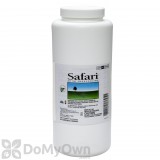
In Stock. Normally ships in 1 business day.
For large order quotes, please call us at 866-581-7378.
Free Shipping*
Have a Question? Ask Our Pros!
You May Also Need
Average Rating
24 Reviews | 137 Q&A
Product Overview
Safari 20SG Systemic Insecticide with Dinotefuran is a super-systemic insecticide with quick uptake and knockdown, and controls a broad spectrum of ferocious and invasive pests, including Q- and B-biotype whitefly, hemlock woolly adelgid, emerald ash borer, mealybug, leafminer, fungus gnat, black vine weevil, glassy-winged sharpshooter, armored and soft scale and lacebugs some of the most costly pests that affect high value greenhouse and nursery crops such as poinsettia and hibiscus, as well as trees, shrubs and herbaceous ornamentals in the lawn and landscape market.
Product Documents
Features and Specs
Application to ornamental plants:.
- Safari 20 SG Insecticide can be applied as a foliar spray, a broadcast spray, a soil drench, soil injection and via chemigation for insect control in ornamental plants in greenhouses, nurseries, outdoor landscapes and interior plantscapes.
- Safari 20 SG Insecticide is a systemic product and will be taken up by the root system and translocated upward throughout the plant. When applied as a foliar spray, the product offers translaminar and locally systemic control of foliar pests.
- When applied to the soil, Safari 20 SG Insecticide will be translocated more quickly in herbaceous plants than in woody shrubs and trees. Speed of insect control will range from as little as one day for small herbaceous plants in containers, to several weeks in large trees growing in the landscape.
Application to Vegetable Transplants:
- Safari 20 SG Insecticide can be applied as a foliar spray or a broadcast spray for insect control in vegetable transplants.
Applications to Ornamental Plants, and Vegetable Transplants:
Safari 20 SG Insecticide can be applied using many different types of application equipment. Apply in sufficient water to ensure good coverage of ornamental plants. Tank mixing with a surfactant will produce better coverage when making applications to plants with hard to wet foliage such as holly or pine. If concentrate or mist type spray equipment is used, apply the same amount of Safari 20SG on the sprayed area as would be used in a dilute solution. To assure optimum effectiveness, Safari 20SG must be placed where the growing portion of the target plant can absorb the active ingredient. Applications can be made to foliage or as a soil drench.
Customer Reviews
See all 24 customer reviews »
White flies on coconut trees
By Doug on 04/27/2013
I followed directions and applied four times over a three week period. It didn't have any effect on white flies on coconut trees in SW Florida. I used Dominion 2L and it worked with one treatment in three weeks. Only cost $75 for three bottles to do 20 trees. Spent over $500 on Safari. Very disapointed. DMOPC was excellent to deal with on both products.
Was this review helpful to you? Yes No
37 of 44 people found this review helpful
Killing Spotted Lanternflies in Eastern PA
By James on 08/16/2019
used product to kill infestation of Spotted Lanternflies in Lancaster County, PA. Used Safari 20SG (recommended by PA Department of Agriculture) as a root drench on a pair of "Tree of Heaven" to create trap trees. Was done about 4 weeks ago. Trees or now covered with Lanternflies and the ground is covered with dead Lanternflies. I am very pleased, hopefully it will continue to kill Lanternflies until winter comes. Can send pics if you want them
32 of 33 people found this review helpful
Great product! Directions for use on palms would be helpful
By Cheryl on 09/05/2016
We just got around to using this product a few weeks ago. We used it to treat our sago palms for Cycad Aulacaspis scale. This product was what our County Extension recommended. There were no specific directions for what amount to use for sago palms, so we guessed at what strength to try. We used one teaspoon per gallon of water and used a hand pump sprayer to apply it. Within just a few days we noticed a big improvement in our palms. The scale became powdery and fell off when brushed, so we used a garden hose on high pressure to blast a lot of it off. We followed up the initial treatment with Safari a couple of weeks later, and the scale is nearly all gone from the palms now. We will treat a third time in a few more weeks, and I fully expect the Safari to eradicate the scale after that.
31 of 31 people found this review helpful
By Anonymous on 07/30/2013
Worked great on my Sago Palm Scale and the scale on my crotons.
29 of 30 people found this review helpful
Safari 20SG
By Jeff on 05/28/2014
I bought two 3 pound bottles to tree my hemlock trees in Fannin County, GA. I recommend that you find a clean container to hold your water and this chemical. Mix thoroughly in it first and then transfer to your sprayer.
25 of 28 people found this review helpful
See all 24 customer reviews
Questions & Answers
I can't seem to find the mix rate for Safari 20 when used as a soil drench around ash trees to treat the Emerald Ash Borer. I did note that the mix could also be sprayed directly on the bark around the trunk of the tree. Which is more effective and requires the least amount of chemical?
The mixing ratio of Safari 20SG Systemtic Insecticide is 1.5 - 2.0 fl. oz. per inch of the trunk diameter. This needs to be mixed in at least 5-10 gallons of water. Remember, the important thing about using this product is that the water is a carrier. The amount of product is what is important.
Was this answer helpful to you? Yes No
57 of 82 people found this answer helpful
We are trying to see how long it takes the product to start to degrade and lose its effectiveness.
54 of 65 people found this answer helpful
52 of 57 people found this answer helpful
Safari can be applied as a basal trunk spray. It is part of a product label that is distributed by the manufacturer.
47 of 74 people found this answer helpful
Does this kill bumblebees, honeybees or ladybugs?
36 of 38 people found this answer helpful
See all 137 customer questions
From $139.98 + Free Shipping* Buying Options
- Sign into your account to receive your members only Savings.

Everything You Need To Know About All Types Of Palm Trees
Click here to buy or rent palm trees for summer in the northeast, tri-state, mid-atlantic, all about palm trees, palm trees in idaho, discover the resilience of palm trees in the warmest zones of idaho..
Despite its mainland atmosphere of sweltering summers and cold winters, certain varieties of very hardy palms can thrive in this state. In Boise city, temperatures dip to 29°F (– 2°C) in January and rise to a pleasant 74°F (23°C) in July. Moisture levels are generally low throughout Idaho.
Idaho USDA zones range from 2b to 7a, offering diverse conditions. The highest recorded temperature reached a scorching 118 °F (48 °C), while the lowest dropped to a bone-chilling −60 °F (−51 °C). On average, the winter brings around 20 inches (51 cm) of snowfall.
Unlock the potential of palm trees in Idaho! While only the hardiest varieties can thrive, incorporating building insulation and creating microclimates can greatly enhance their chances of survival. By experimenting with different palm types, you can embark on a unique journey of botanical exploration.
Needle Palm Tree – Zones 5b-11 (- 15 to - 10F)
European Fan Palm Tree – Zones 7b-11 (5 to 10 F)
Pindo Palm Tree – Zones 7b-11 (5 to 10 F)
Sago Palm Tree – Zones 7b-11 (5 to 10 F)
Saw Palmetto Palm Tree – Zones 7a-11 (0 to 5 F)
Windmill Palm Tree – Zones 7b-11 (5 to 10 F)

- Remember me Not recommended on shared computers
Forgot your password?
- DISCUSSING PALM TREES WORLDWIDE
WELCOME GUEST
It looks as if you are viewing PalmTalk as an unregistered Guest.
Please consider registering so as to take better advantage of our vast knowledge base and friendly community. By registering you will gain access to many features - among them are our powerful Search feature, the ability to Private Message other Users, and be able to post and/or answer questions from all over the world. It is completely free, no “catches,” and you will have complete control over how you wish to use this site.
PalmTalk is sponsored by the International Palm Society. - an organization dedicated to learning everything about and enjoying palm trees (and their companion plants) while conserving endangered palm species and habitat worldwide. Please take the time to know us all better and register.

Russian Palms at Their Limits

By Alex High January 16, 2021 in DISCUSSING PALM TREES WORLDWIDE
Recommended Posts
Hello Palm Lovers,
While it is well known to many that lots of palms grow in Sochi, Russia, it is not the only place in the country where palms are found. If you head up the coast from Sochi, there are many palms up to the Crimean peninsula and on it, most commonly windmills, and there are also some palms a bit inland, in the city of Krasnodar. And I also found some windmill palms in the city of Derbent near the border with Azerbaijan on the Caspian Sea. My first question is are there any further north locations on the Black and/or Caspian Seas where there are palms, and if so I would love to know. I know it's not Russia, but my other question is does anyone know if there are any palms in Kazakhstan, as the southwest corner of the country is the same latitude as Derbent. I will show pictures of the Russian palms that I know of and I would love to hear of any other Russian palms at their limits that you know of. I have done a good deal of searching on Google Maps/Google Earth, but more searching is certainly necessary. Thanks!
First off, some naturalized Trachys at the Yew-Boxwood Grove near Sochi. I didn't want to put any pictures of Sochi palms since there are already plenty of great ones on Palmtalk:
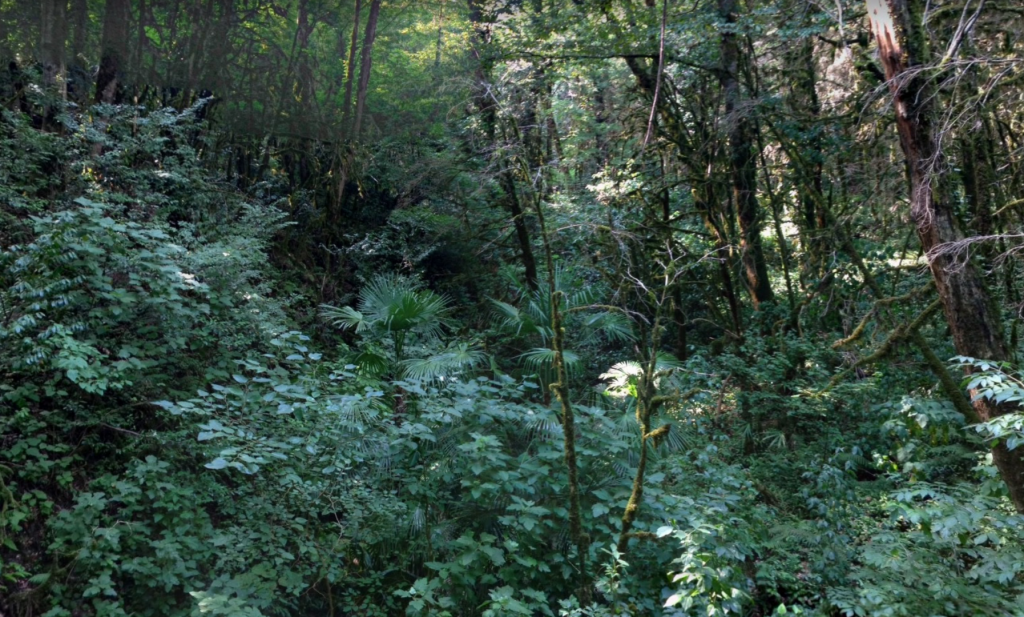
More naturalized palms at the Yew-Boxwood Grove in Sochi:
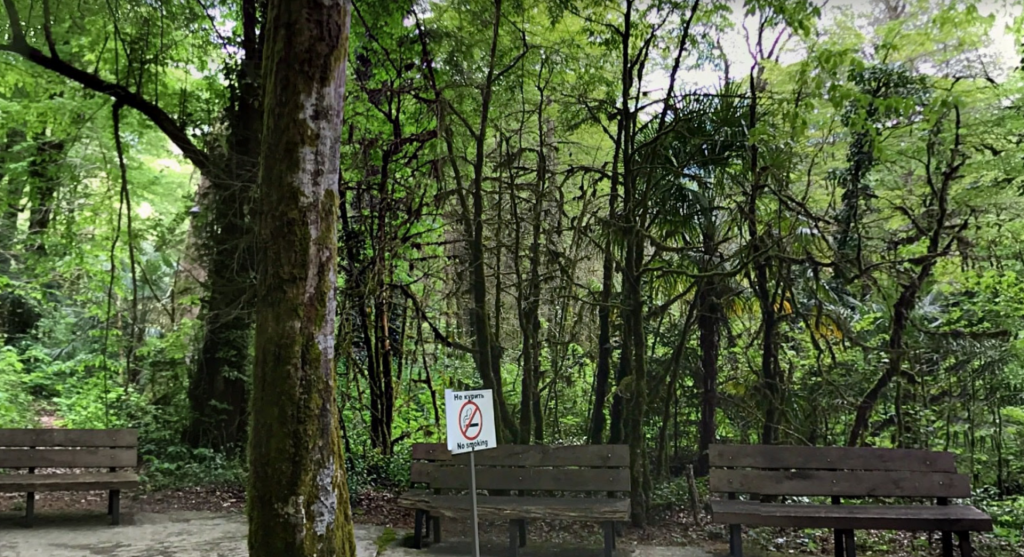
A bit further inland and at a higher elevation than seaside Sochi, there are some palms in Krasnaya Polyana. Here is a C. humilis:

A young windmill:

A big windmill and some small ones:
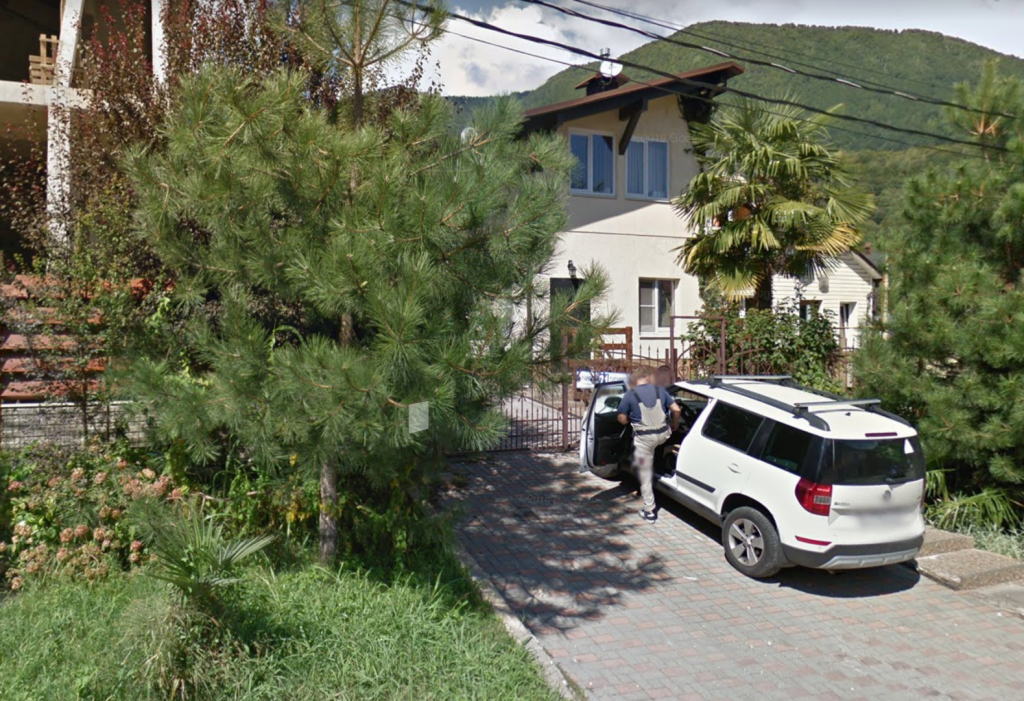
Heading up the Black Sea coast, Tuapse has some palms. Here is a windmill:

And further up the coast in Gelendzhik are the northernmost Black Sea coast palms in Russia that I know of (not counting disputed Crimea). If you know of any other palms in north of there, please let me know. Here is a pretty big windmill:
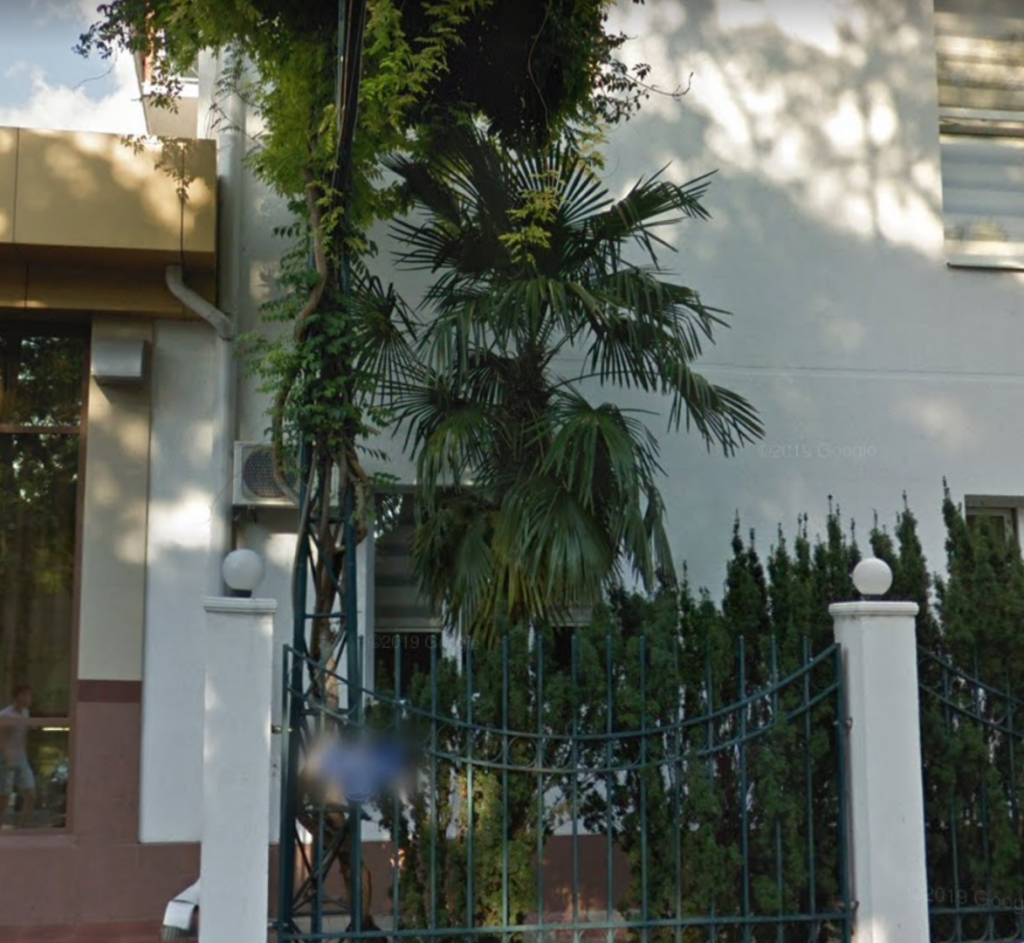
Some more windmills:
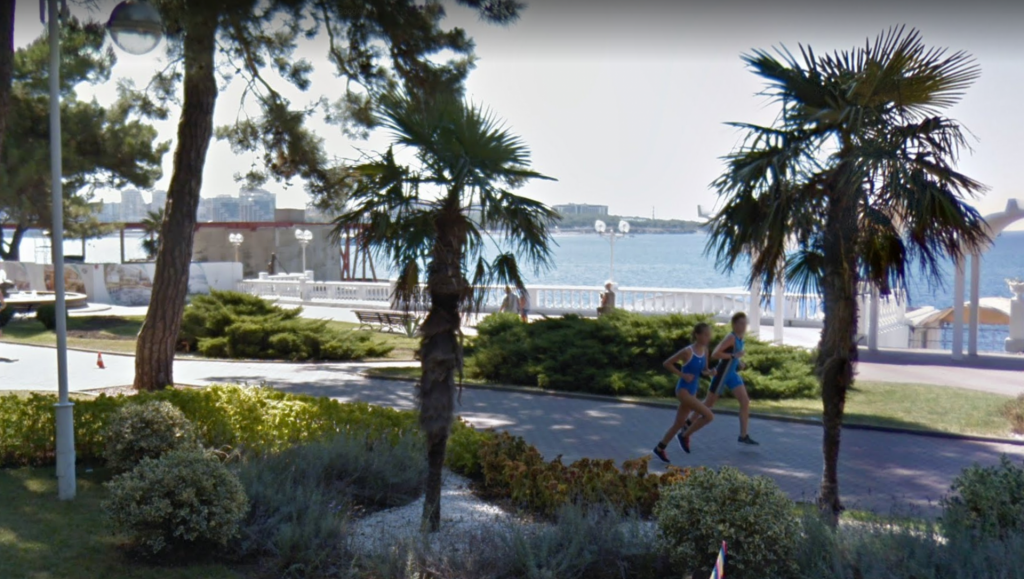
And next up are the northernmost palms I know of in Russia. They are located at Krasnodar Stadium in the city of Krasnodar. I believe that they were all transplanted there when the stadium was constructed and have done pretty well since, although the windmills have taken a little while to adjust. Here are some of the many windmills that line the paths:
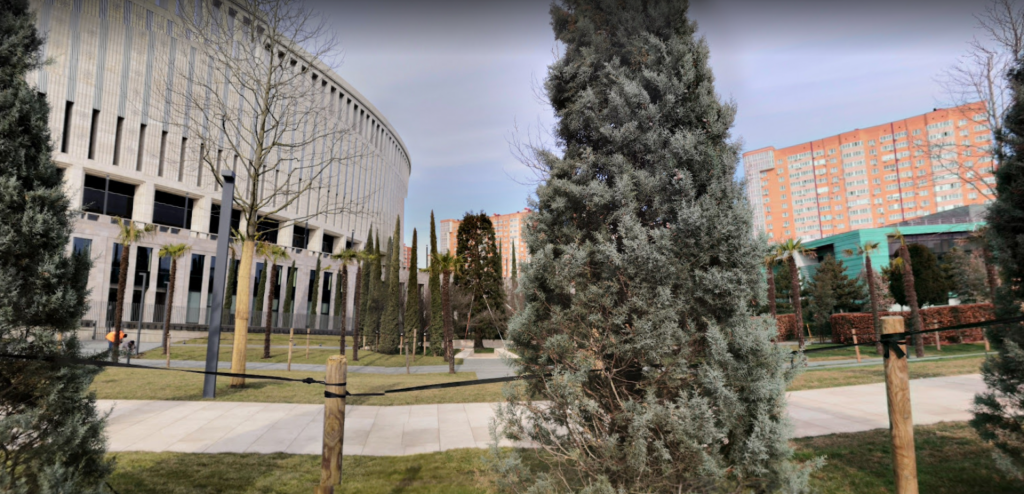
Aerial shot shortly after transplanting with garden under construction:
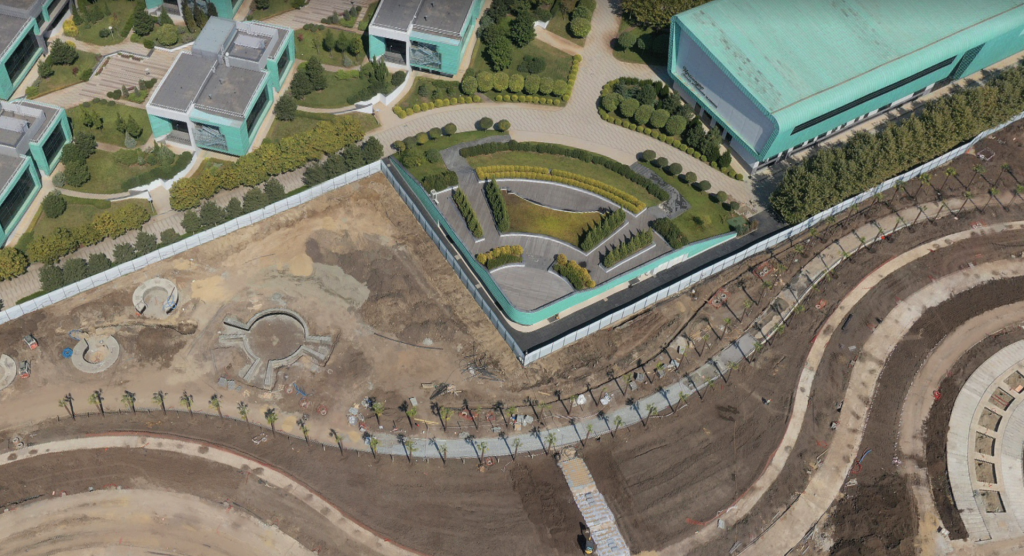
These surprised me!:

And last but certainly not least, the city of Derbent. These are actually some of the southernmost palms in Russia, but they are special because they are on the Caspian Sea, which means that the city has a cold semi-arid climate vs. Sochi's subtropical climate. Surprisingly there are actually quite a few windmills in the city center. Here is a small but healthy-looking windmill:
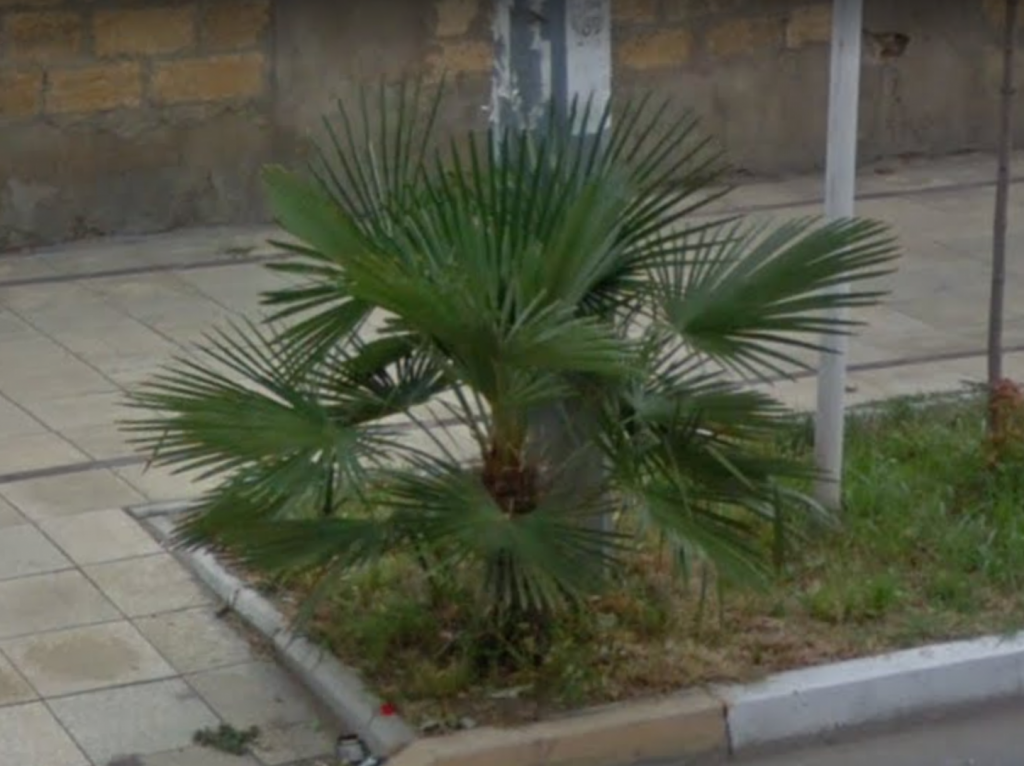
Another windmill:
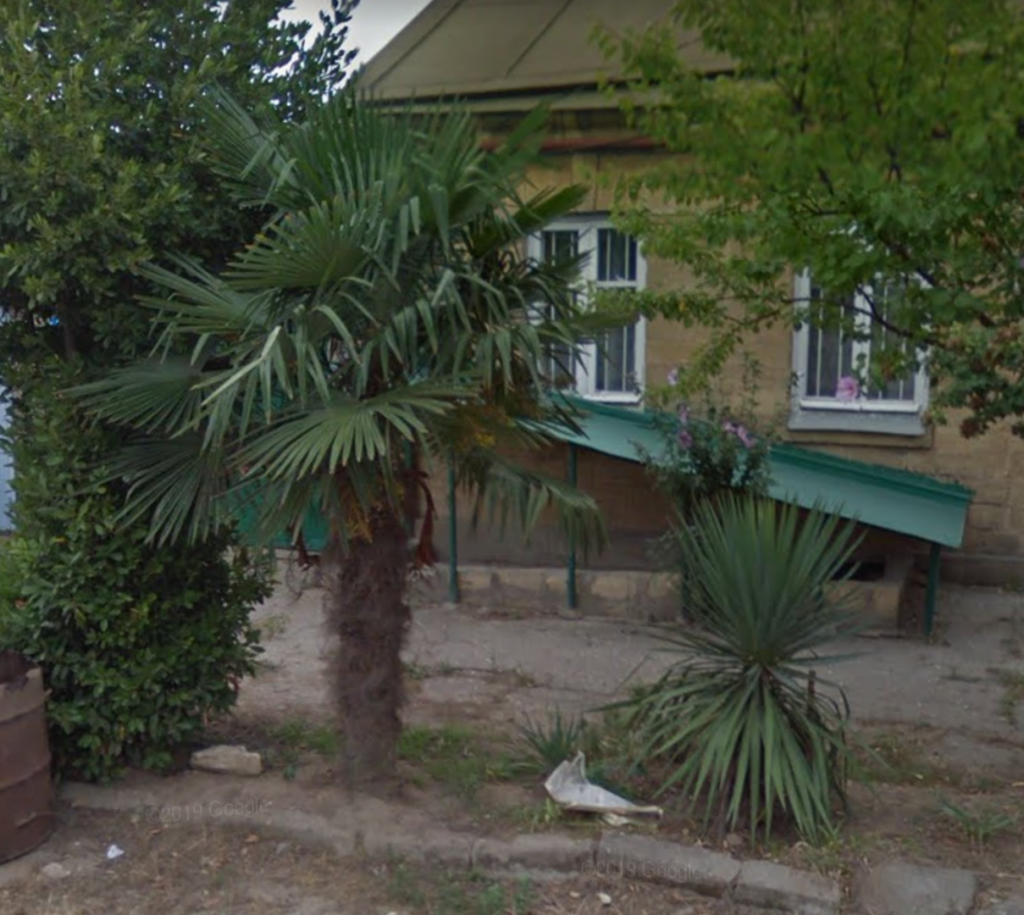
More windmills:

Some tattered looking windmills:
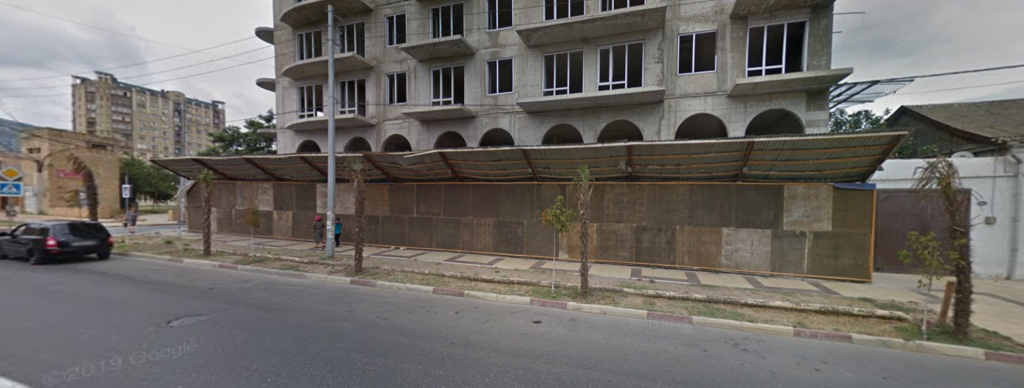
And this traffic circle with lots of windmills:

If you know of any other palms on the north Caspian coastline, whether in Russia, Kazakhstan, or Turkmenistan, as I did not see much online about palms growing there but there must be some, so I think a Google Earth search is necessary. I would love to know of any additional palms anywhere north of the other places I mentioned as well. Thank you so much!

Link to comment
Share on other sites, axel amsterdam.
Filifera's in Lazarevskaya:
https://goo.gl/maps/9qLSMiGVvAa3iMq79
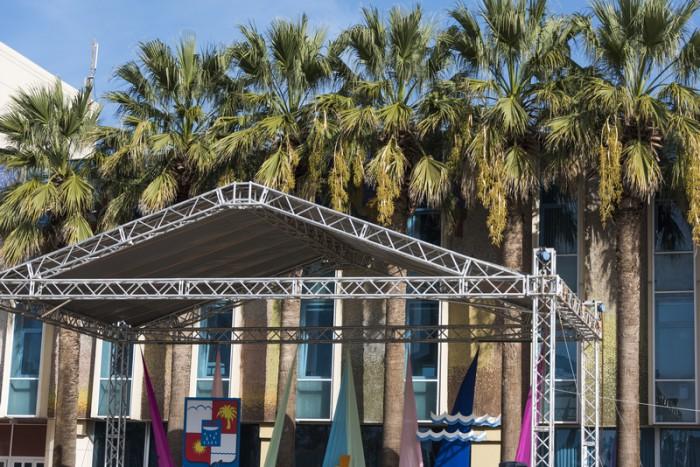
Lazarevskaya is north of Sotchi and colder than Sotchi. There are only trachies and these filifera’ grown there.
7 hours ago, Axel Amsterdam said: Filifera's in Lazarevskaya: https://goo.gl/maps/9qLSMiGVvAa3iMq79
Thank you so much, I had no idea there were W. filifera that big north of Sochi! Awesome! Thanks again and take care!
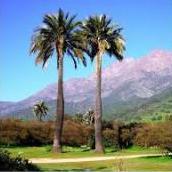
PricklyPearSATC
On 1/26/2021 at 6:26 AM, Maxim said: Baku (Azerbaijan)
I'm surprised, but then I googled Baku. Baku sits below sea level!! Average daily low in January low is higher than El Paso, TX. No info on the average annual low, but they average 4 snow days in January.

This is kind of offtopic, but I have a bit hard time understanding why there is so few palms along the western part of the Black sea. Countries I am thinking about are Bulgaria and Romania. I tried finding some palms on these coasts but all i found was palms in containers, not even trachies in the ground! anyone have some palm photos for those regions or are perhaps from there?

On 3/20/2021 at 11:18 AM, Palmfarmer said: This is kind of offtopic, but I have a bit hard time understanding why there is so few palms along the western part of the Black sea. Countries I am thinking about are Bulgaria and Romania. I tried finding some palms on these coasts but all i found was palms in containers, not even trachies in the ground! anyone have some palm photos for those regions or are perhaps from there?
Those places actually aren't that warm - for example, Burgas in Southern Bulgaria on the coast has an average winter low (not minimum) of -1c (29.5f). Besides Crimea, those countries can barely support Trachies and Chamaerops as they are in hardiness zones 7 and 8.
- 2 months later...
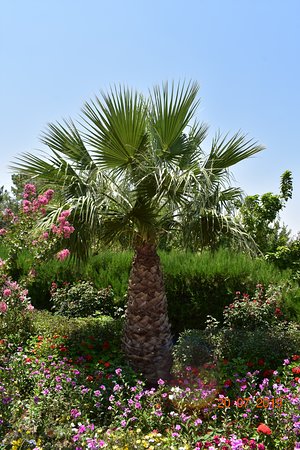
From the same region. Denov, Uzbekistan. This 25 years old Washy is probably the largest specimen in the country.
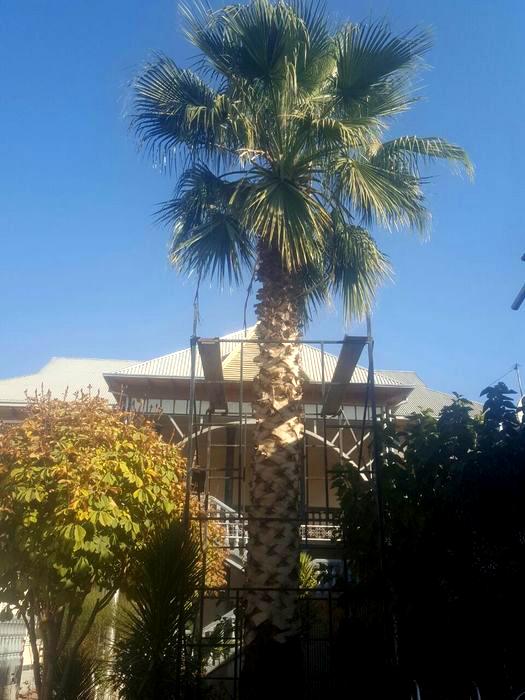
2 hours ago, MSX said: From the same region. Denov, Uzbekistan. This 25 years old Washy is probably the largest specimen in the country.
11 hours ago, MSX said: From the same region. Denov, Uzbekistan. This 25 years old Washy is probably the largest specimen in the country.
Beautiful washy.
Avg High and lows for Denov - am I correct in assuming it's a warm 8a or cold 8b there?
Also, Termez seems like a plausible place for Filibustas and Filiferas, Phoenix Dactyliferas and Canariensis, Brahea Armata, Nanorrhops and Chamaerops. What do you think?

On 6/20/2021 at 7:44 AM, Teegurr said: Beautiful washy. Avg High and lows for Denov - am I correct in assuming it's a warm 8a or cold 8b there? Also, Termez seems like a plausible place for Filibustas and Filiferas, Phoenix Dactyliferas and Canariensis, Brahea Armata, Nanorrhops and Chamaerops. What do you think?
Yeah Nathan, totally agree with you this Washy looks great! I think this large Washy is cross-bred Filibusta, not pure Filifera? The trunk is quite slender, canory is rather open than dense, no?
I bet its owner who started this palm from seed is very proud now of having grown this beauty up to this size! Denov is located in a very nice protected valley-oasis in the south of the country, and they are in 8b closer to 9 hardiness zone, sub-freezing winter temperatures is a rare thing down there, they grow all kinds of sun loving species, today I got a freshly ripen yellow muskmelon from there. Plus, their winters are dry, nice place for growing desert palm species. Actually I have never been to that part of the country but I'd love to drive around one day, see what exotic species they have. Last month I visited a fair, a garden fair where different nurseries from all parts of the country bring their stuff for sale (flowers, plants, accessories, etc) and there was one seller from Denov area selling palms seeds from locally grown palms, and this is what is growing there
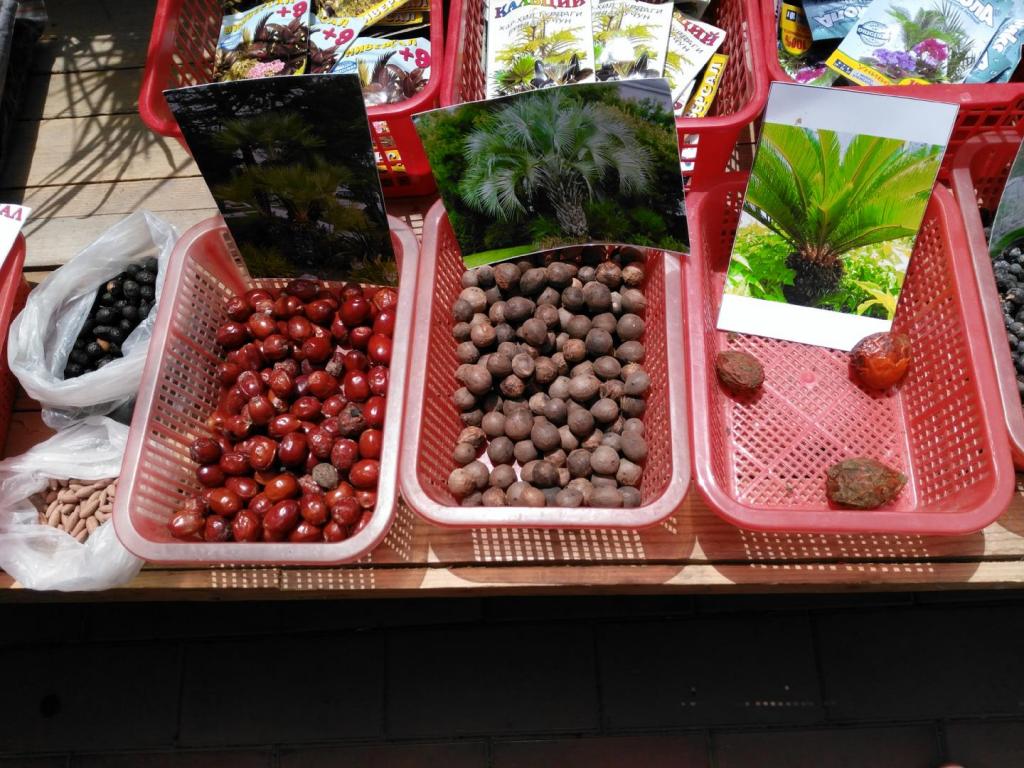
4 hours ago, MSX said: Yeah Nathan, totally agree with you this Washy looks great! I think this large Washy is cross-bred Filibusta, not pure Filifera? The trunk is quite slender, canory is rather open than dense, no? I bet its owner who started this palm from seed is very proud now of having grown this beauty up to this size! Denov is located in a very nice protected valley-oasis in the south of the country, and they are in 8b closer to 9 hardiness zone, sub-freezing winter temperatures is a rare thing down there, they grow all kinds of sun loving species, today I got a freshly ripen yellow muskmelon from there. Plus, their winters are dry, nice place for growing desert palm species. Actually I have never been to that part of the country but I'd love to drive around one day, see what exotic species they have. Last month I visited a fair, a garden fair where different nurseries from all parts of the country bring their stuff for sale (flowers, plants, accessories, etc) and there was one seller from Denov area selling palms seeds from locally grown palms, and this is what is growing there
Cool to see palm interest there.
It's definitely a filibusta, the leaves look very robusta-like, with the trunk being a bit thick due to filifera genes.
So P. dactylifera would be a good candidate for Denov, right?

Interesting. I see the seed seller in Denov is using an old photo of the Southsea CIDP’s in southern England. The grass in the centre verge has since been concreted over. I visited that spot in April and took some photos. Collected some seeds off several of the CIDP’s as well, which have since sprouted…
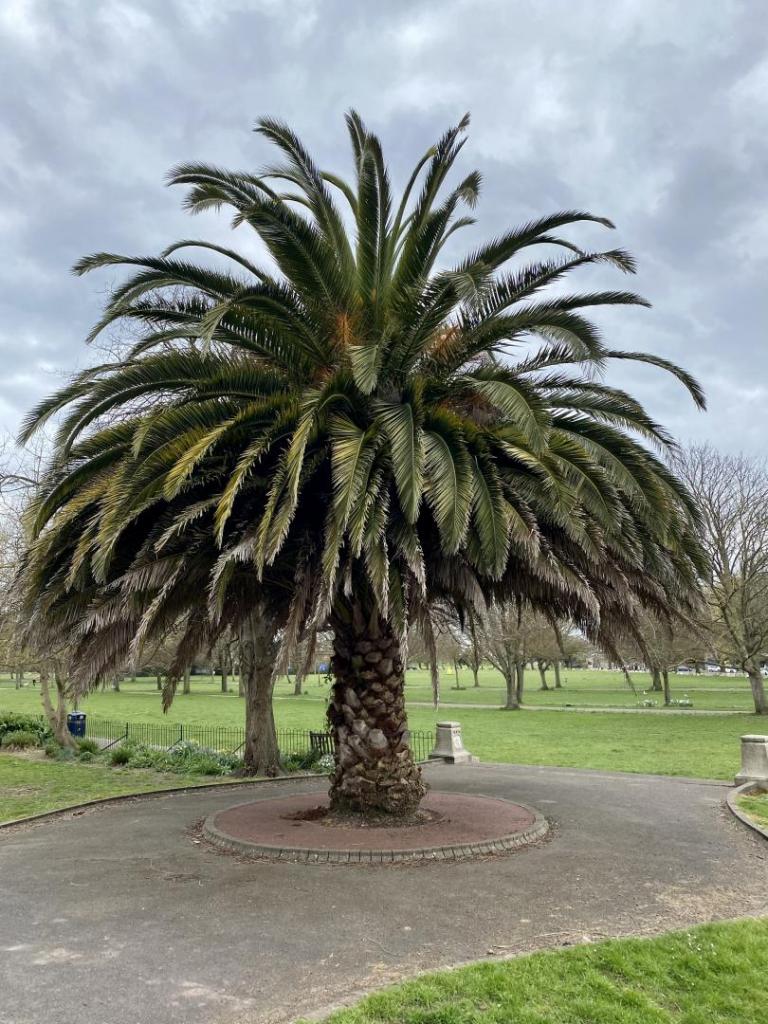
Dry-summer Oceanic climate (9a)
Average annual precipitation - 18.7 inches : Average annual sunshine hours - 1725
On 3/20/2021 at 7:18 PM, Palmfarmer said: This is kind of offtopic, but I have a bit hard time understanding why there is so few palms along the western part of the Black sea.
there are no Caucasus Mountains there...
On 3/20/2021 at 7:18 PM, Palmfarmer said: Bulgaria
http://www.polarpalm.net/bg/winterpalms.html
22 hours ago, UK_Palms said: Interesting. I see the seed seller in Denov is using an old photo of the Southsea CIDP’s in southern England. The grass in the centre verge has since been concreted over. I visited that spot in April and took some photos. Collected some seeds off several of the CIDP’s as well, which have since sprouted…
No wonder the seller decided to use the photo of this absolutely fantastic looking specimen! If I see him next year and if he comes back with the same demo photo I will show him your post with the photo of the original CIDP! I didn't get any CIDP seeds from him, as I understand limits for my 8A zone, I have one CIDP potted and it's enough for me for now, it grows faster in an oversized pot faster than my washies in the ground, got some butia and chamaerops seeds instead. Btw, great gemination success, not less than 100%!
Create an account or sign in to comment
You need to be a member in order to leave a comment
Create an account
Sign up for a new account in our community. It's easy!
Already have an account? Sign in here.
Recently Browsing
- No registered users viewing this page.
- Existing user? Sign In
- IPS Main Site
- Online Users
- All Activity
- My Activity Streams
- Unread Content
- Content I Started
- Leaderboard
- Create New...
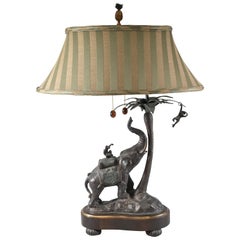
Frederick Cooper Safari Collection Elephant, Palm Tree, Monkey Table Lamp
View similar items.

- Item Details
- Seller Information
About the Item
- Creator : Frederick Cooper (Maker)
- Dimensions : Height: 30 in (76.2 cm) Width: 12 in (30.48 cm) Depth: 8 in (20.32 cm)
- Style : Modern (Of the Period)
- Materials and Techniques : Brass
- Period : 20th Century
- Date of Manufacture : 20th Century
- Condition : Good Very nice condition.
- Seller Location : Toledo, OH
- Reference Number : 1stDibs: LU1658224086992

Frederick Cooper
In the early 20th century, a Chicago artist named Frederick Cooper found himself captivated by home lighting and electric lamps, which were only common in approximately half of American households during the mid-1920s. Cooper, whose primary media were sculpture and painting, began to design stately, modern table lamps that mirrored the grandeur of the burgeoning architecture in the Windy City .
Cooper accrued some notoriety as a forward-looking lamp designer who combined materials like brass, ceramics, glass and wood to create exquisitely crafted lamps, particularly at a time when the striking chrome finishes and sharp geometric angles of Art Deco lighting had become immensely popular.
The Frederick Cooper Lamp Company was eventually sold to Benjamin Markle and Russian immigrant Leo Gershanov. Under their stewardship after the Second World War, the manufacturer flourished in Chicago and the local lighting artisans at Stiffel gained a formidable competitor. The timing was particularly ripe — the demand for table lamps to furnish new houses exploded, and the company built on Cooper’s artistic reputation and his signature styles.
Lighting designers at Frederick Cooper innovated in the years that followed, integrating alluring materials like glazed ceramics, painted porcelain, marble and jade. Apart from the classic Art Deco designs that defined the studio’s work in its early days, the company’s craftsmen experimented with Asian-inspired designs and produced floor lamps, wall lights, modernist chandeliers and other fixtures in varying furniture styles such as Neoclassical , Hollywood Regency and Empire .
Now owned by Wildwood, the Frederick Cooper Lamp Company has collaborated with many high-profile designers such as Larry Laslo , Mario Buatta and others on a range of lighting projects.
Find an extraordinary collection of Frederick Cooper floor lamps , table lamps and other fixtures on 1stDibs.
20th Century North American Modern Table Lamps
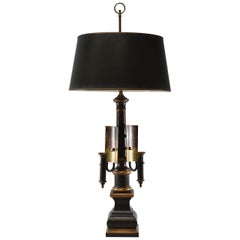
Frederick Cooper Table Lamp Adjustable Candleholders
Late 20th century table lamps.
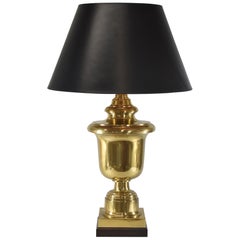
Fredrick Cooper Brass Table Lamp, Urn Shaped Base
Late 20th century hollywood regency floor lamps.
Brass, Enamel
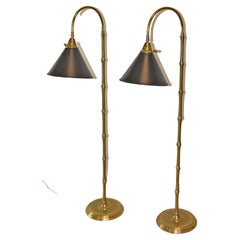
Mario Buatta for Frederick Cooper Brass Bamboo Floor Lamp
Vintage 1970s north american modern table lamps.
Composition
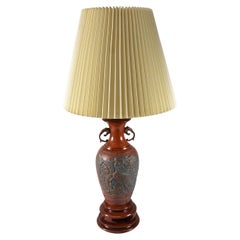
Marbro Table Lamp Chinese Peacocks
20th century modern table lamps.

Pair of Stacked Lucite Helix Table Lamps
21st century and contemporary table lamps.
Aluminum, Steel
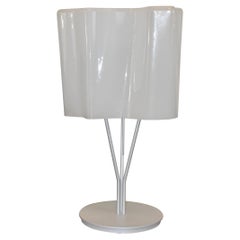
Artemide Italian "Logico" Table Lamp
Vintage 1980s american mid-century modern table lamps.
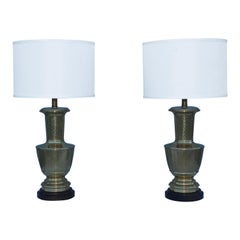
Frederick Cooper Brass Table Lamps
Mid-20th century american table lamps.

Sculptural Brass Elephant Table Lamp by Tyndale for Frederick Cooper Lamp Co.
Mid-20th century north american mid-century modern table lamps.
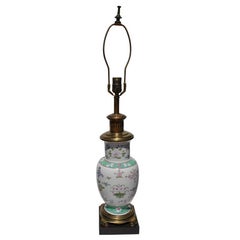
Vintage Frederick Cooper Porcelain Table Lamp
Vintage 1960s american hollywood regency table lamps.
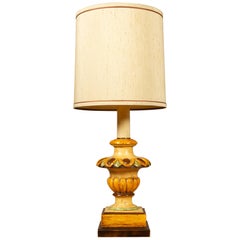
Vintage Frederick Cooper Table Lamp, 1960s
Vintage 1970s modern table lamps.
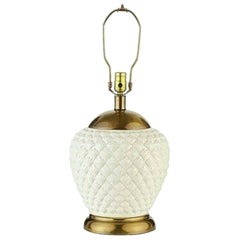
Coastal Frederick Cooper Beehive Ceramic Table Lamp
Late 20th century unknown table lamps.
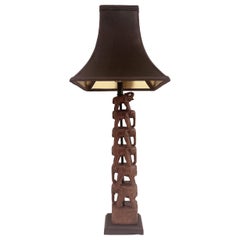
Carved Stacked Elephant Totem Lamp 1980s Attributed to Frederick Cooper
Recently viewed, more ways to browse.

IMAGES
VIDEO
COMMENTS
African Safari Tree Species: A Deep Dive. By Karen Bradshaw Updated on December 4, 2023. ... This is a type of palm tree that has an amazing fruit yield; some trees can grow as many as 2000 fruits in a single season! These fruits, sometimes called makalani nuts, are bursting with protein and carbs, so are a popular snack for locals.
Sausage Tree Kigelia Africana. Evergreen or deciduous depending on local rainfall patterns, the sausage tree has a lush green canopy that stands up to 65 feet tall. Its name refers to the extraordinary hard-shelled fruit, which might grow up to 3 feet long and weigh as much as 25lb. Although the fruit is toxic, it is traditionally hollowed out ...
Artificial Palm Tree Plants 30" Tall UV Resistant Tropical Areca Plant Faux Plants Monstera Leaves Floral Arrangement Safari Leaves Beach Leave Party Suppliers Decorations. ... 5.7Ft Faux Tropical Jungle Hanging Plants Palm Safari Leaves, Faux Greenery Vines for Garden Porch Patio Beach Party Indoor Outdoor Décor. 4.3 out of 5 stars. 118.
The coconut palm tree ( Cocos nucifera) is a tall, single-stemmed palm with smooth, ringed trunks and a crown of arching fronds. It is one of the most recognizable palm trees and the only coconut-producing palm. The coconut palm thrives in tropical climates in sandy soil and can reach heights of up to 100 feet (30 m).
Loulu Palm Trees (Pritchardia spp.) Loulu palm trees are native to Hawaii and vary in size from tall trees that can reach 50 ft. (15 m) tall to small or dwarf trees that reach up to 16 ft. (5 m) tall. They have a single trunk and are identified by large fan fronds on stalks measuring 2 to 10 ft. (0.6 - 3 m) long.
Giegxin 30 Pcs 25 Inch Artificial Palm Leaves Large Faux Plants Plastic Palm Fronds Fake Tropical Palm Tree Leaves Decorations Leaf Decor for Palm Floral Arrangement Jungle Beach (Green, 8 x 25 in) 58. $2799 ($0.93/Count) FREE delivery Mon, Jul 1 on $35 of items shipped by Amazon. Or fastest delivery Sat, Jun 29.
Palm Tree Animal Print Digital Paper,Cheetah Scrapbooking Paper,Leopard Print Paper,Tropical Safari Palm Tree Backgrounds,INSTANT DOWNLOAD. (2) $3.80. Vintage forest landscape. Palm tree wall chart, Vintage wall art, palm tree jungle illustration, tropical wall art, Boho Wall Art Wall decor. (414)
Every Safari classroom needs palm trees! I knew the focus of the trees needed to be about the color, shape, and contrast...basically, a silhouette of a palm tree with a twist! Use the palm trees two frame windows, doors, bulletin boards, or whiteboar
Check out our safari palm design selection for the very best in unique or custom, handmade pieces from our clip art & image files shops. ... Jungle Tiger Giraffe Lion Zebra Palm Tree | Digital Download | Personalised Edit and Print | (31) $ 5.26. Add to Favorites Logo Design, Lion Logo, Safari Logo, Etsy Logo, Branding, Animal Logo, Premade ...
Description. Joey Palm Trees can grow up to 10 - 20 ft tall and 10 - 15 ft wide. A medium sized, trunkless palm with large, simple, undivided leaves that can be up to 6m in length, coming directly from an underground root-stock. These large, leathery, diamond-shaped leaves are pleated along their length, and have serrated edges.
DIY Palm Tree Balloon Column Kit - Safari Theme birthday - Luau Birthday Balloons - Tropical Balloon Decor - Aloha Baby Shower $ 15.95. Add to Favorites Jumbo Tropical Palm Tree Balloon | Beach Bach Decorations | Coconut Tree Balloon | Beach Party Decors (18.5k) ...
Beistle 3-D Palm Tree Centerpiece, 11.75" Tall - Tropical Luau Party Decorations, Tiki Island Summer Beach Themed Table Decor. 3.3 out of 5 stars. 77. ... 6 Kinds Large Small Green Fake Palm Leaf with Stems for Safari Jungle Hawaiian Luau Party Table Decoration Wedding Birthday. 4.5 out of 5 stars. 4,828. 700+ bought in past month. $13.99 $ 13 ...
When to Bring Cat Palm Back Inside . As summer begins to wind down, keep your eye on the night forecast. Don't forget to bring your cat palm indoors before it gets cold again. Remember, these plants prefer temperatures above 60 degrees, even at night. When the night temperatures are consistently in the 50s, it's time to move your cat palm back ...
MSN
Safari 20SG Systemic Insecticide with Dinotefuran is a super-systemic insecticide with quick uptake and knockdown, and controls a broad spectrum of ferocious and invasive pests, including Q- and B-biotype whitefly, hemlock woolly adelgid, emerald ash borer, mealybug, leafminer, fungus gnat, black vine weevil, glassy-winged sharpshooter, armored and soft scale and lacebugs some of the most ...
Candy & Petal Pink, Heather Purple, Marigold, Auburn, Black, Kelly Green, Ivory. Palm Trees, Birds, and Butterflies are tossed in a rain of leaves and paint splatters. Taller trees are about 2-3/4", from the 'Little Darlings Safari' collection by Sillier than Sally Designs for P&B Textiles. Code: VPALM2MA.
Beistle 3-D Palm Tree Centerpiece, 11.75" Tall - Tropical Luau Party Decorations, Tiki Island Summer Beach Themed Table Decor. 3.3 out of 5 stars. 77. ... 6 Kinds Large Small Green Fake Palm Leaf with Stems for Safari Jungle Hawaiian Luau Party Table Decoration Wedding Birthday Theme Party Decorations. 4.5 out of 5 stars. 4,771. 1K+ bought in ...
By experimenting with different palm types, you can embark on a unique journey of botanical exploration. Palm Trees In Idaho Needle Palm Tree - Zones 5b-11 (- 15 to - 10F) European Fan Palm Tree - Zones 7b-11 (5 to 10 F) Pindo Palm Tree - Zones 7b-11 (5 to 10 F) Sago Palm Tree - Zones 7b-11 (5 to 10 F)
Beach-themed wedding table numbers, Tropical centerpieces, Wedding Table Numbers, Beach Wedding Decor, Wedding Centerpieces. (10.5k) $7.72. Palm Trees Sunset Paradise, 1 Extra Large candle holder with 1 free Electric Tea Light. Wedding table centerpiece.
This paper aims to observe, contextualize, and analyze the multifaceted religious fungal foundations of Moscow Conceptualism within the context of Slavic and European esoteric mythological praxis. By unveiling the thematic basis of their transgressive spiritual endeavors, this study seeks to enhance our comprehension of this artistic and literary movement in the Western world. Besides ...
DISCUSSING PALM TREES WORLDWIDE. Russian Palms at Their Limits. Hello Palm Lovers, While it is well known to many that lots of palms grow in Sochi, Russia, it is not the only place in the country where palms are found. If you head up the coast from Sochi, there are many palms up to the Crimean peninsula and on it, most commonly windmills, and ...
Flamingo Themed Cake Topper, Palm Tree Cake topper, Table Decoration, Palm Tree decor, Safari themed cake topper, Diaper Cake Topper (3.3k) $ 15.00. FREE shipping Add to Favorites Edible Leaves for Jungle/Safari/zoo themed cakes. 10 fondant Palm-tree leaves cake toppers. (57) $ 15 ...
In the early 20th century, a Chicago artist named Frederick Cooper found himself captivated by home lighting and electric lamps, which were only common in approximately half of American households during the mid-1920s. Cooper, whose primary media were sculpture and painting, began to design stately, modern table lamps that mirrored the grandeur of the burgeoning architecture in the Windy City.
Sanduny Baths is not just a public bathhouse, but also an architectural landmark in the very heart of Moscow. The oldest public bath in Russia, founded in 1808 by the actor Sila Sandunov, it has been visited by such great figures as Pushkin, Tolstoy and Chekhov. The current interior design dates back to 1896, and so do the historical bathing ...
Old Palm Tree Safaris. 6,551 likes · 28 talking about this. 0ld Palm Tree Safaris Lodge is a modern art of Safari lodge situated in the namwala game...
Vintage Hand Carved Wooden Safari Animals Lamp with Shade & Finial Giraffe Zebra Leopard Cheetah Coconut Palm Tree African Safari Handmade (148) $ 199.00. Add to Favorites Safari Animals Lamp, Jungle Nursery Decor, Safari Table Lamp, Safari Baby Room decor, Kids room lamps, Bedside lamp tripod - BaA ...